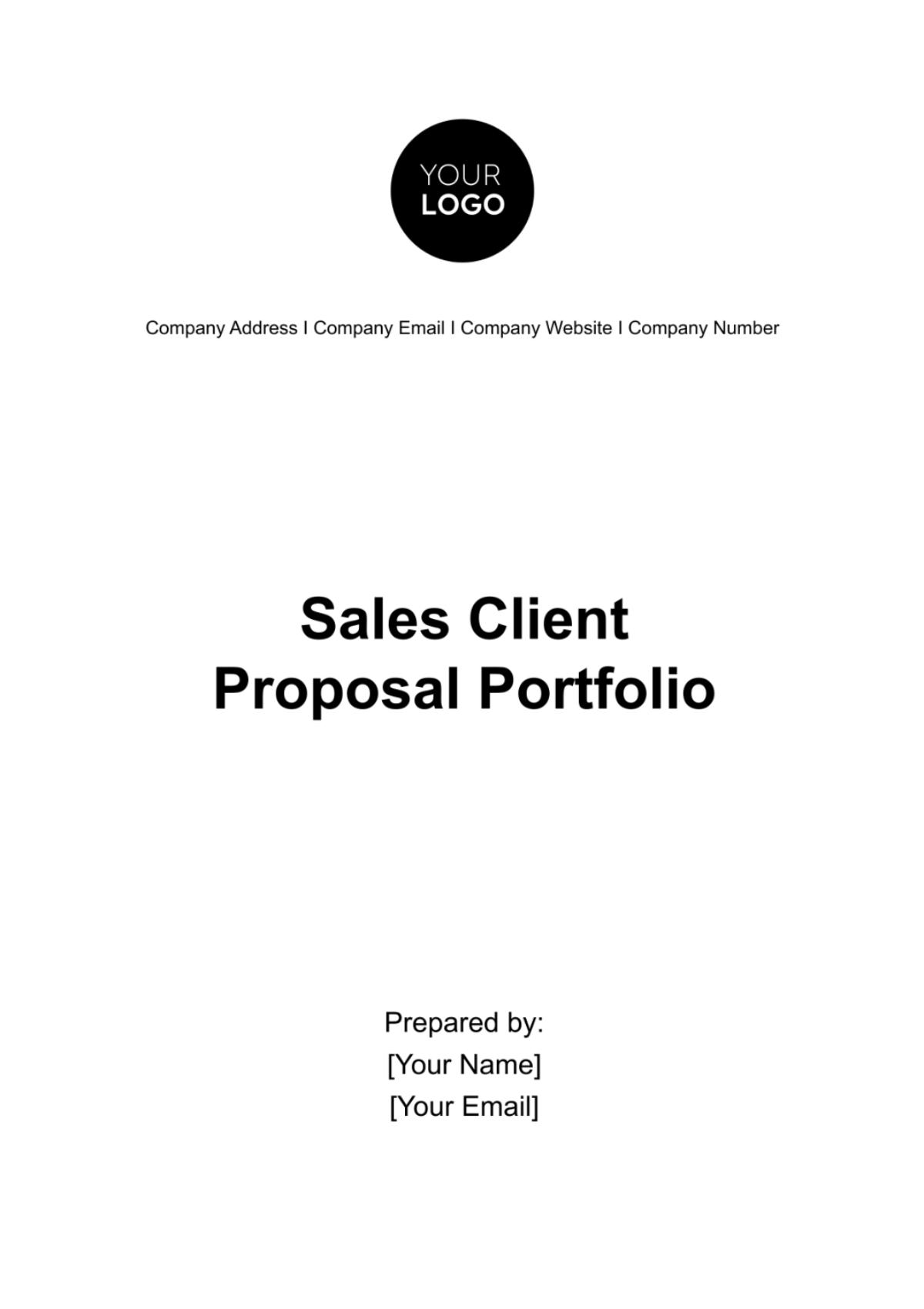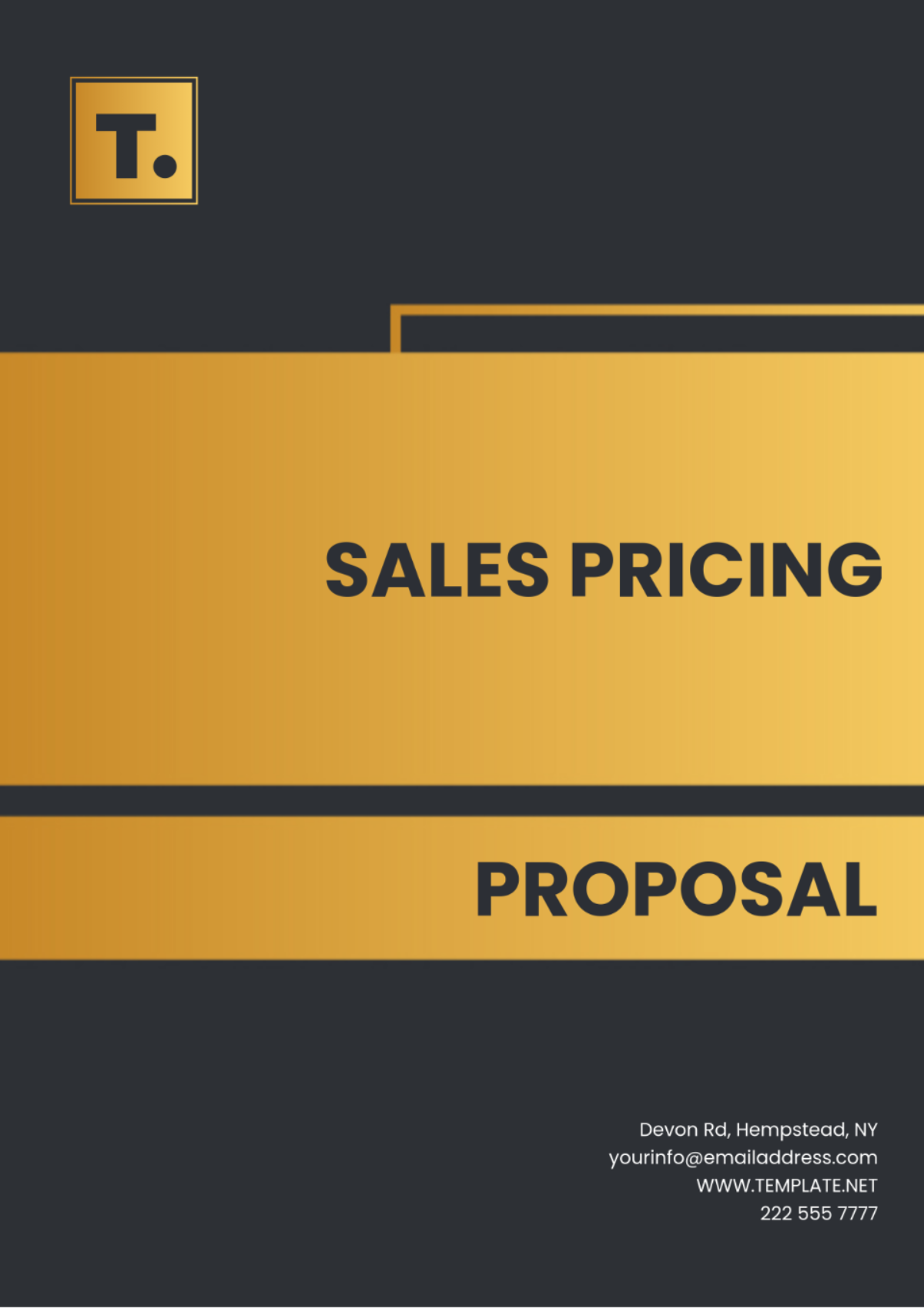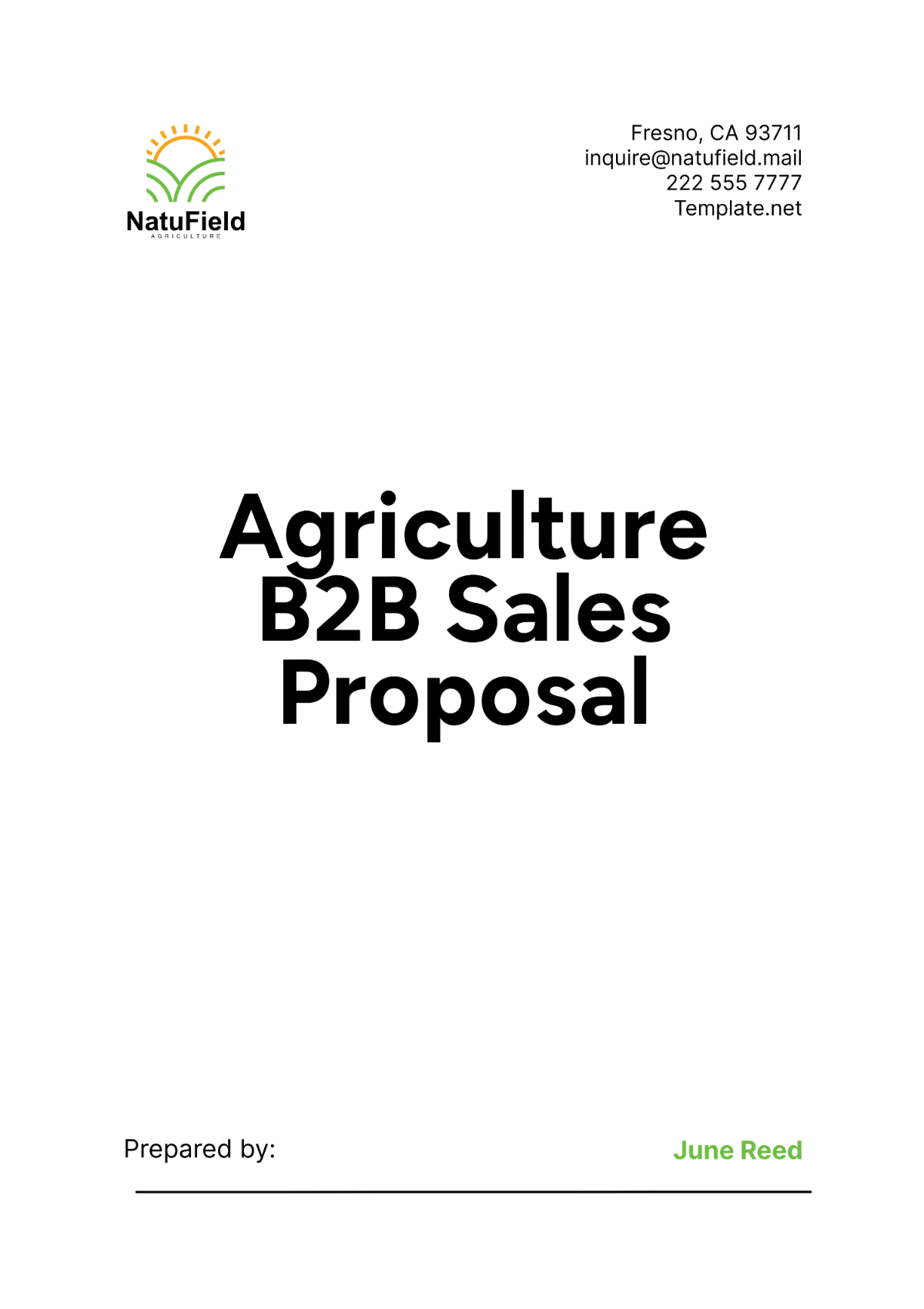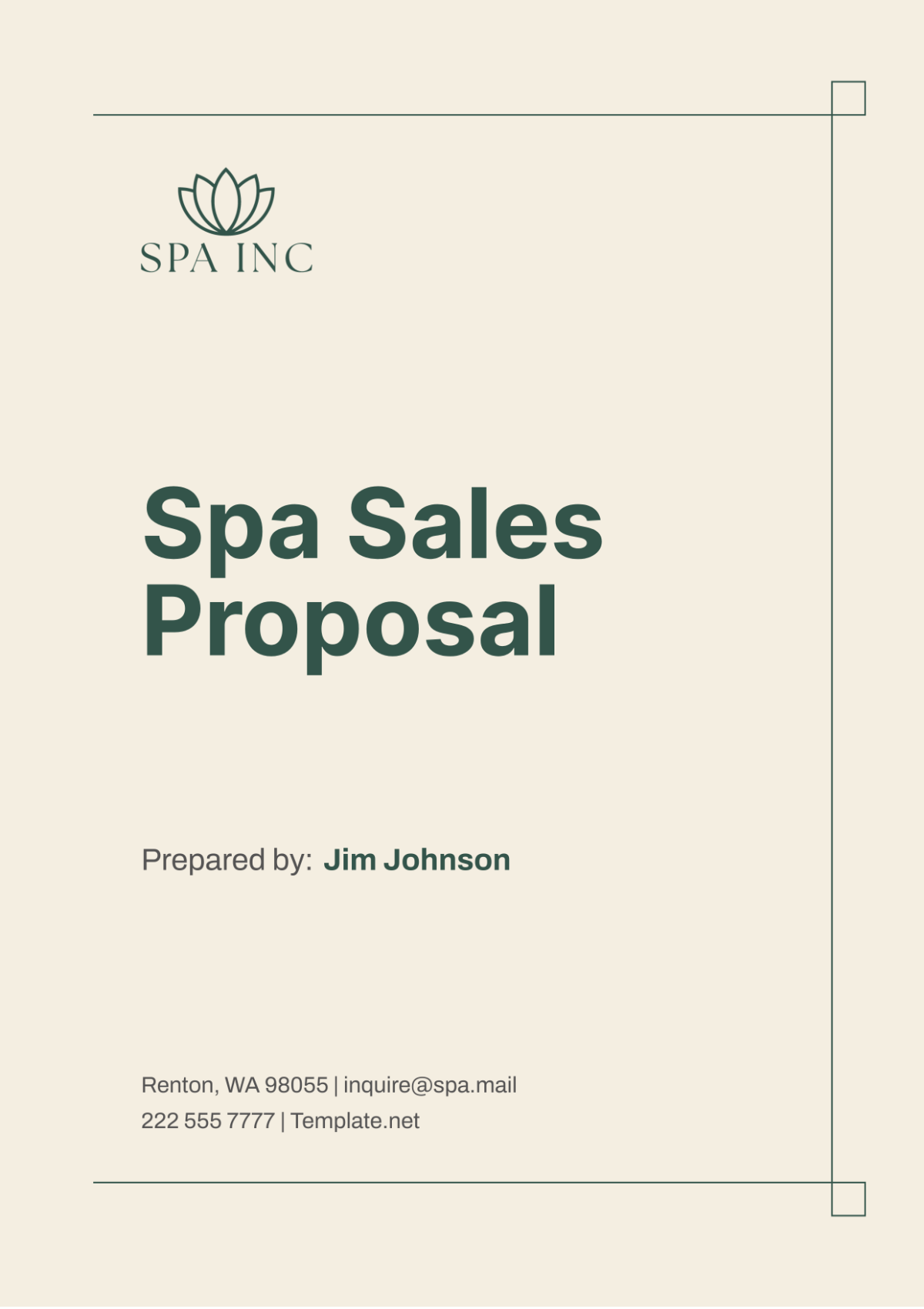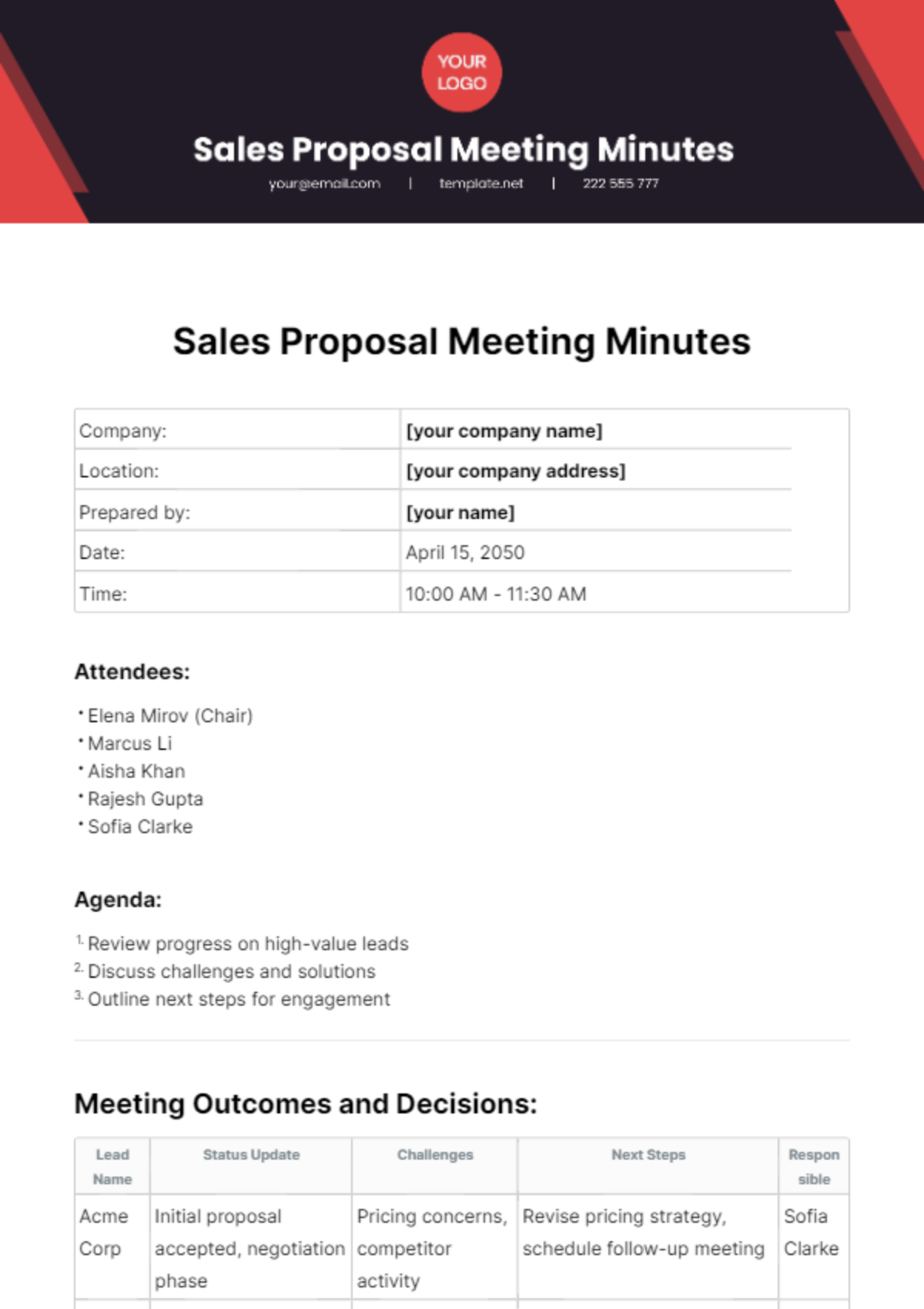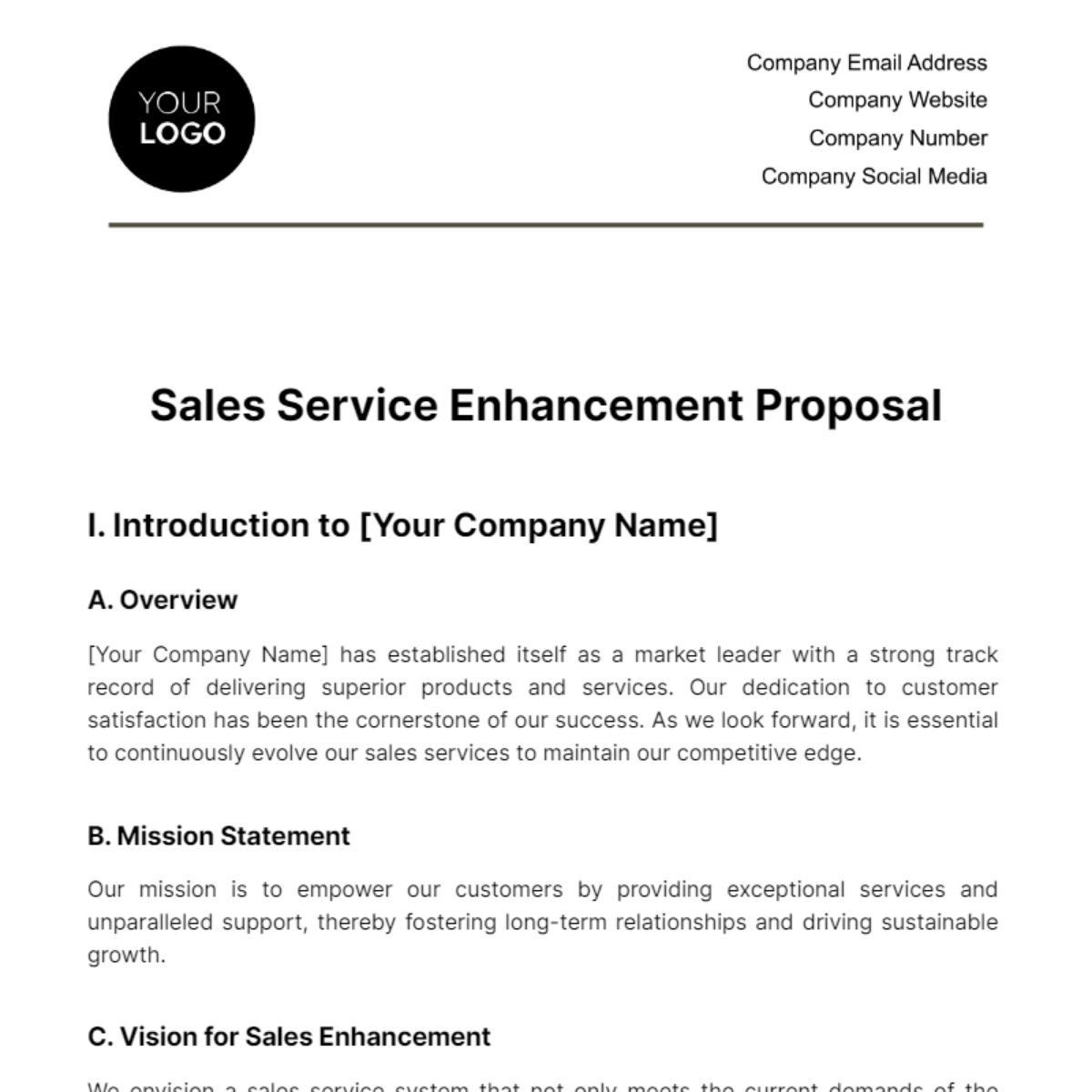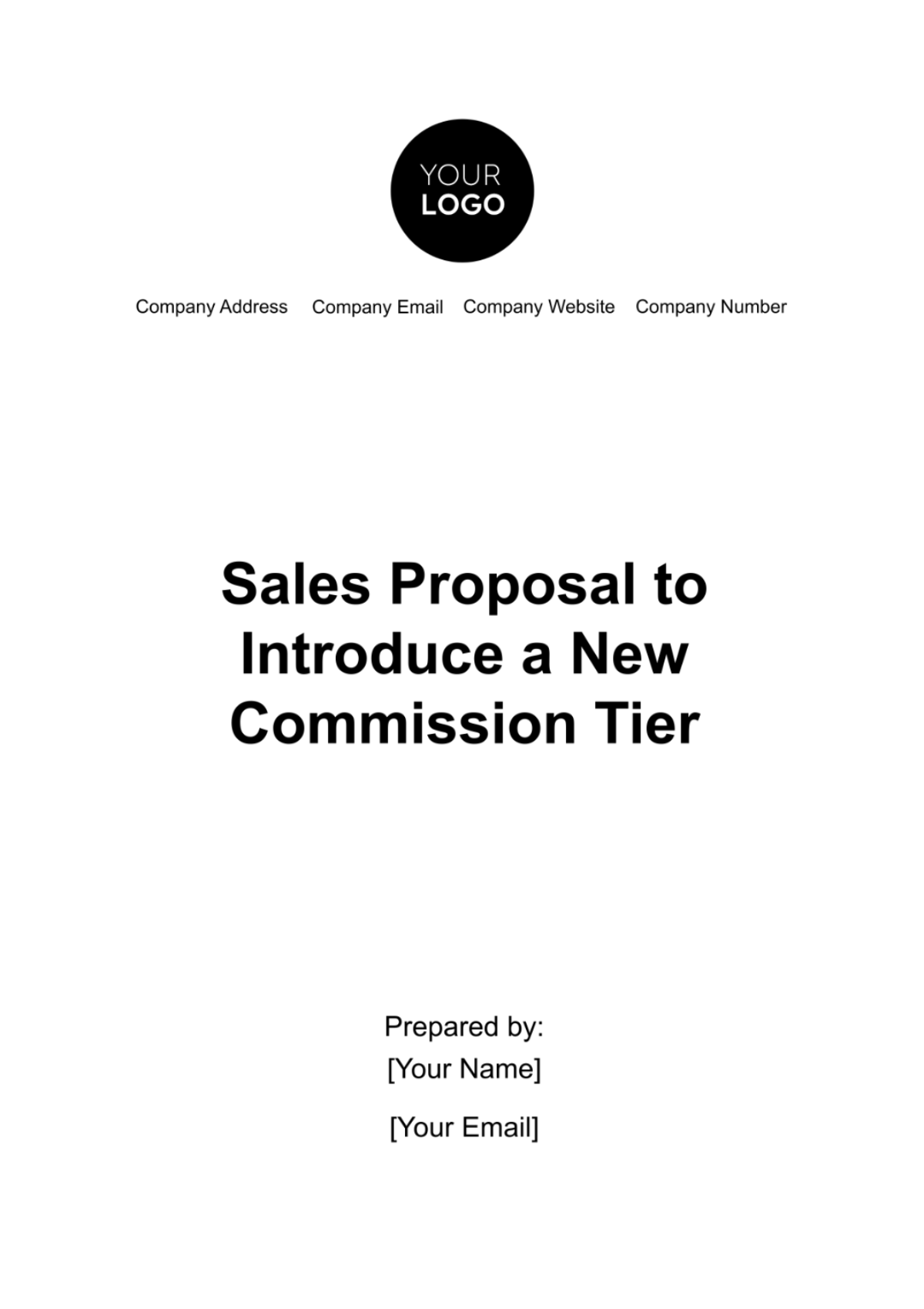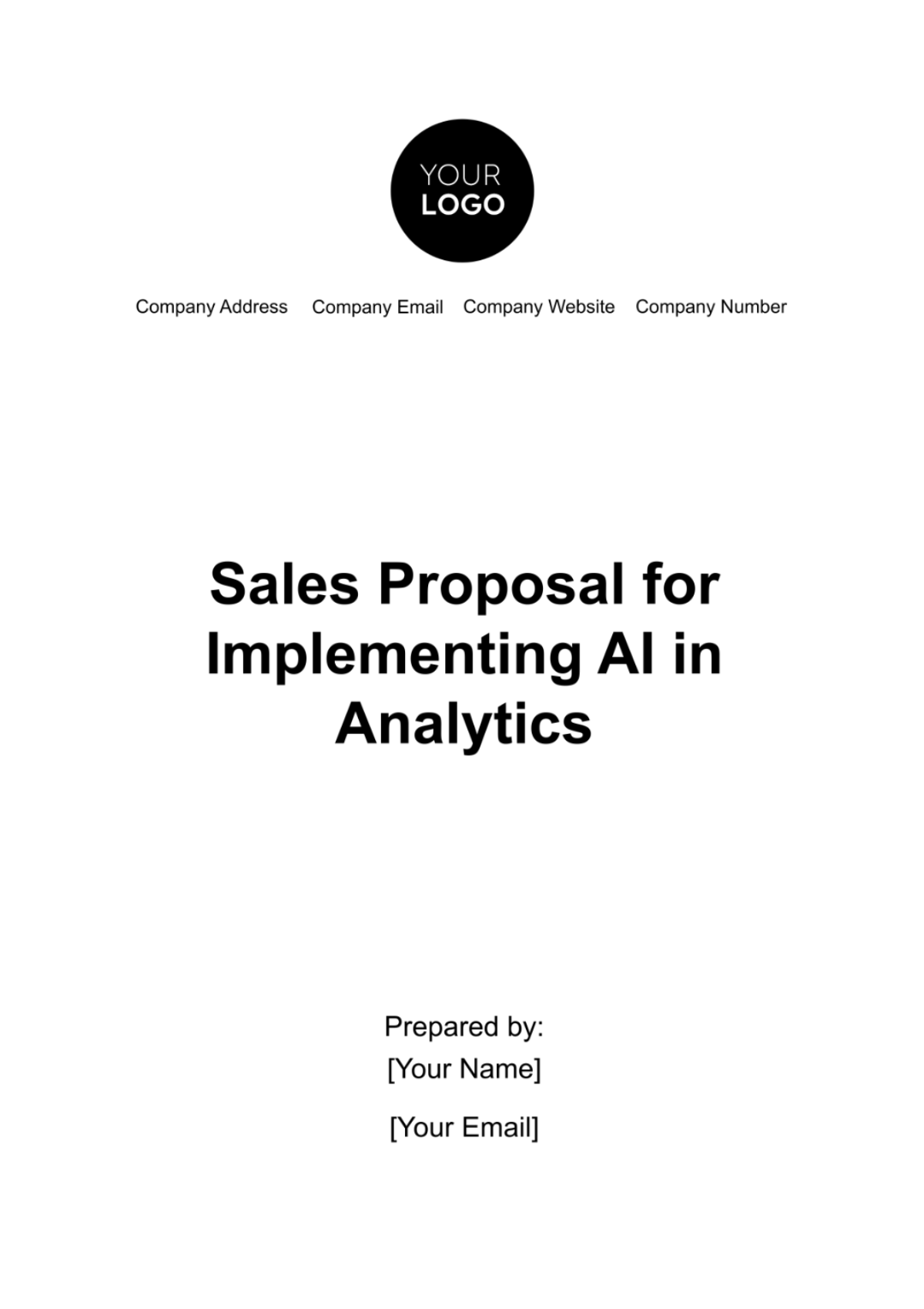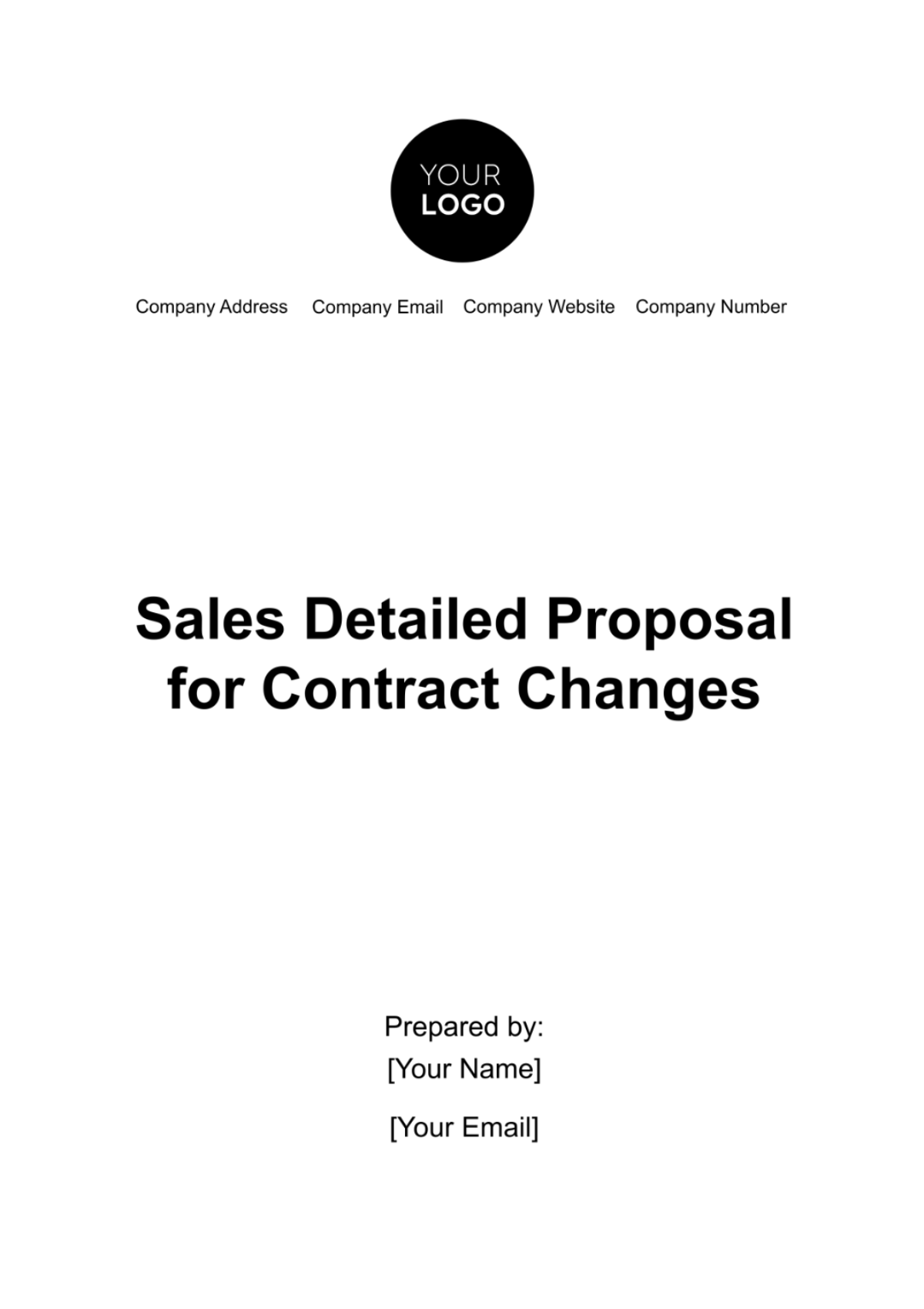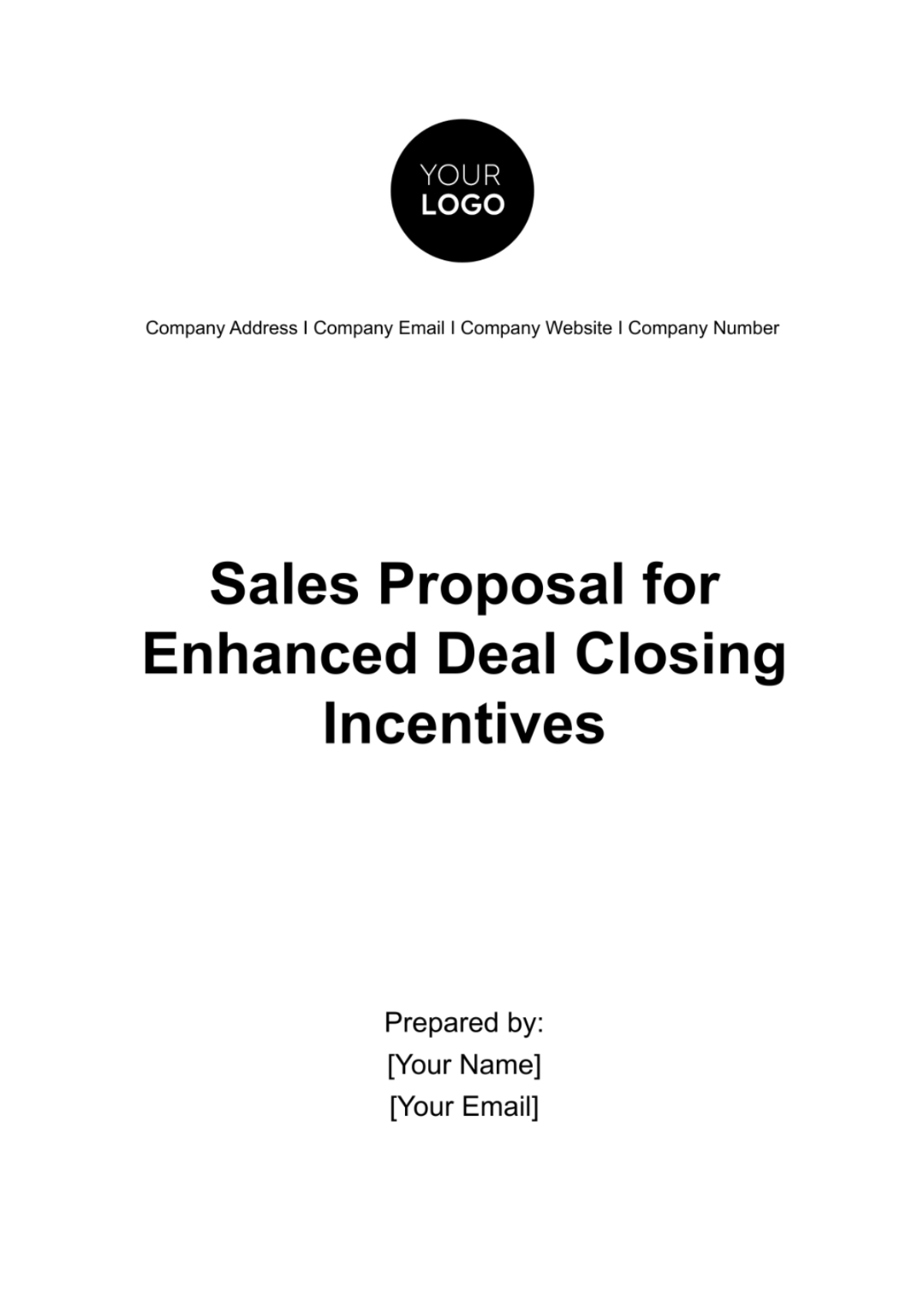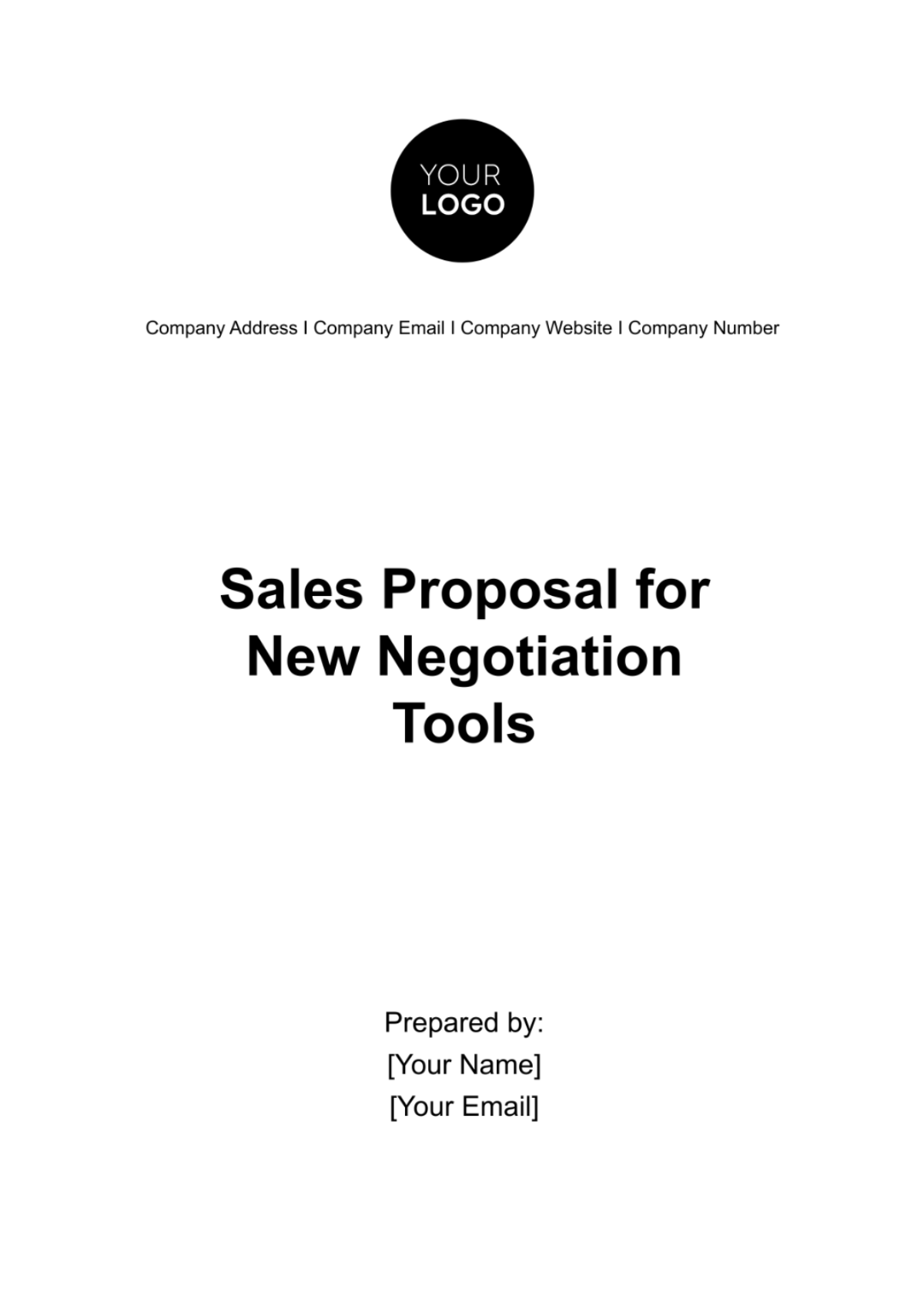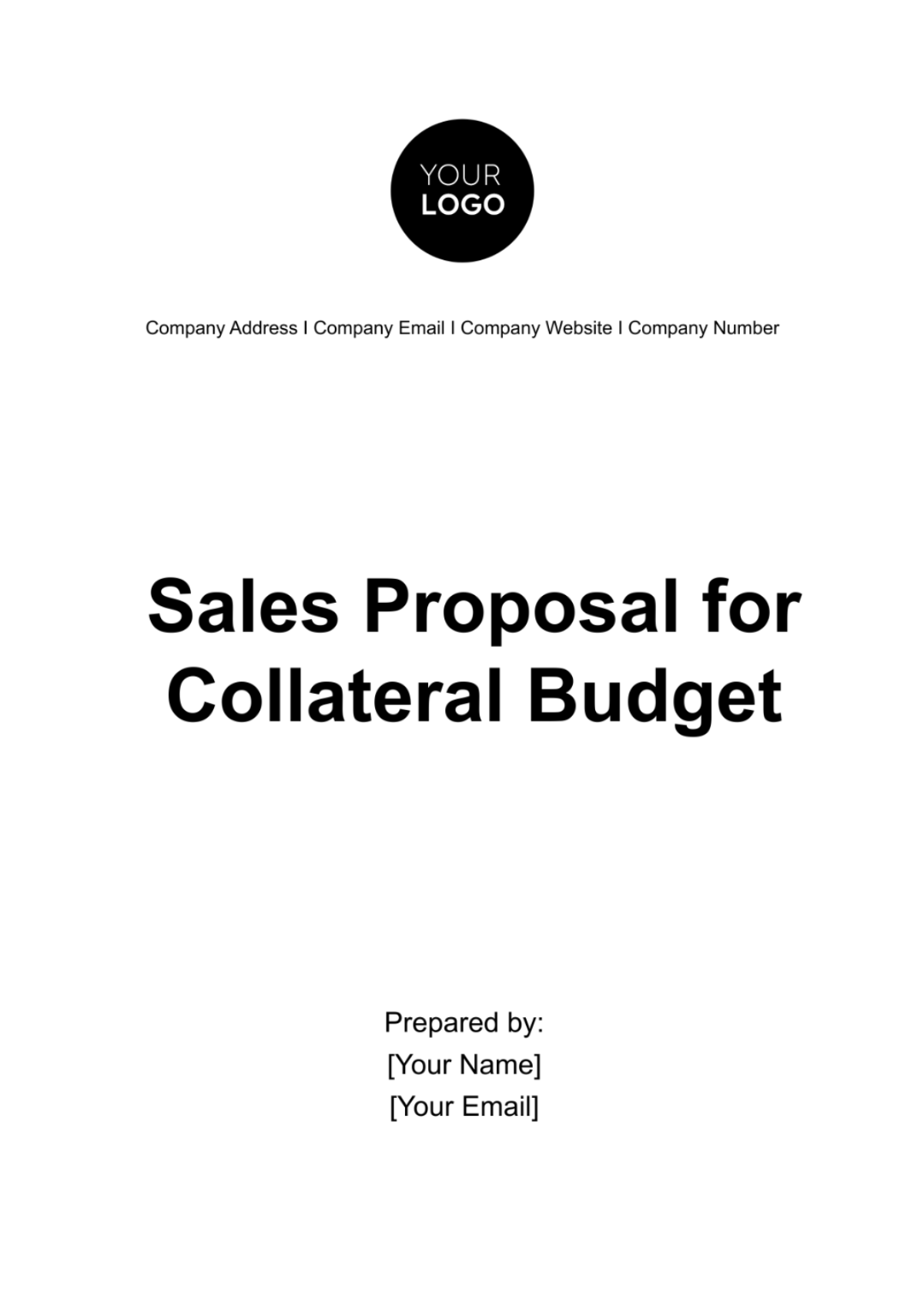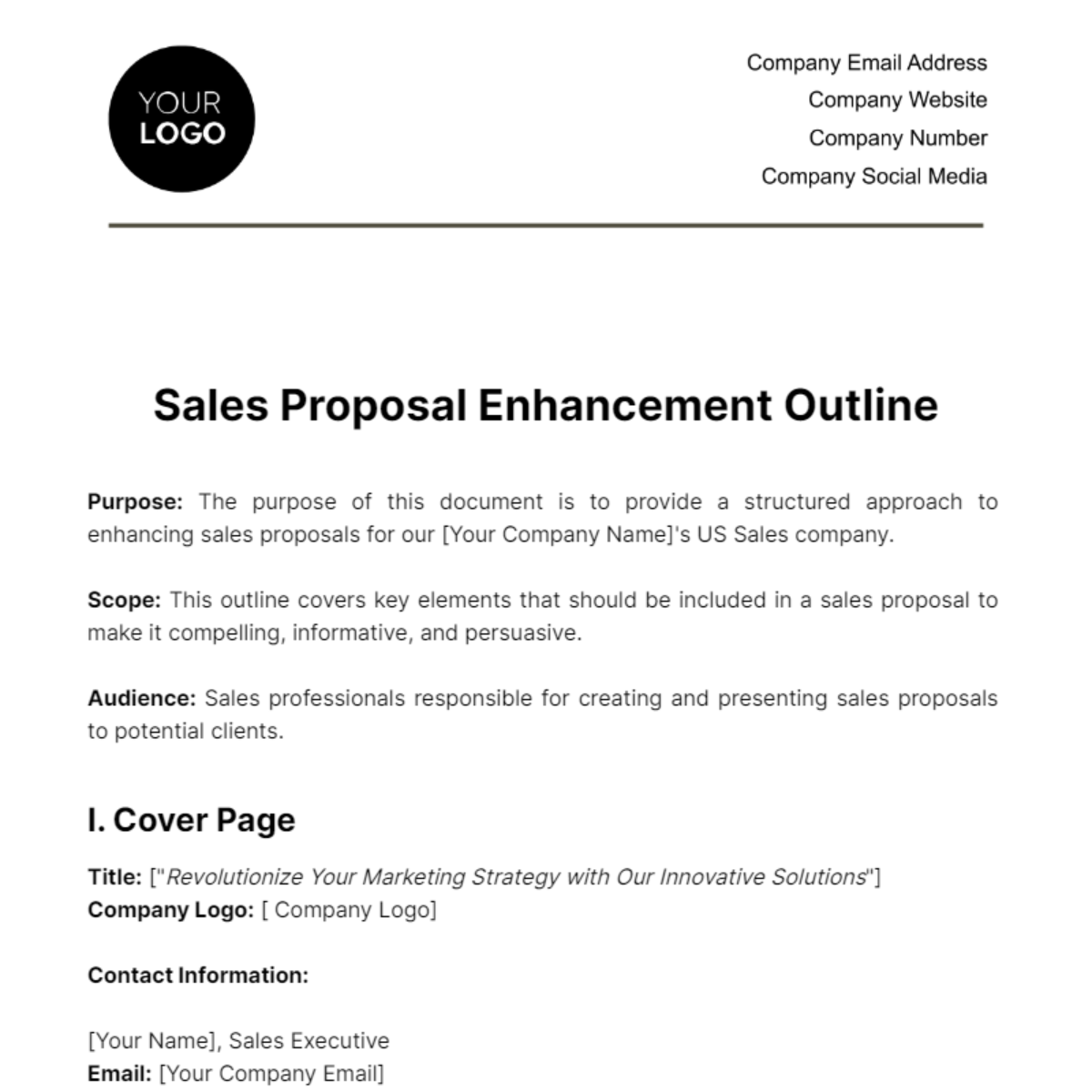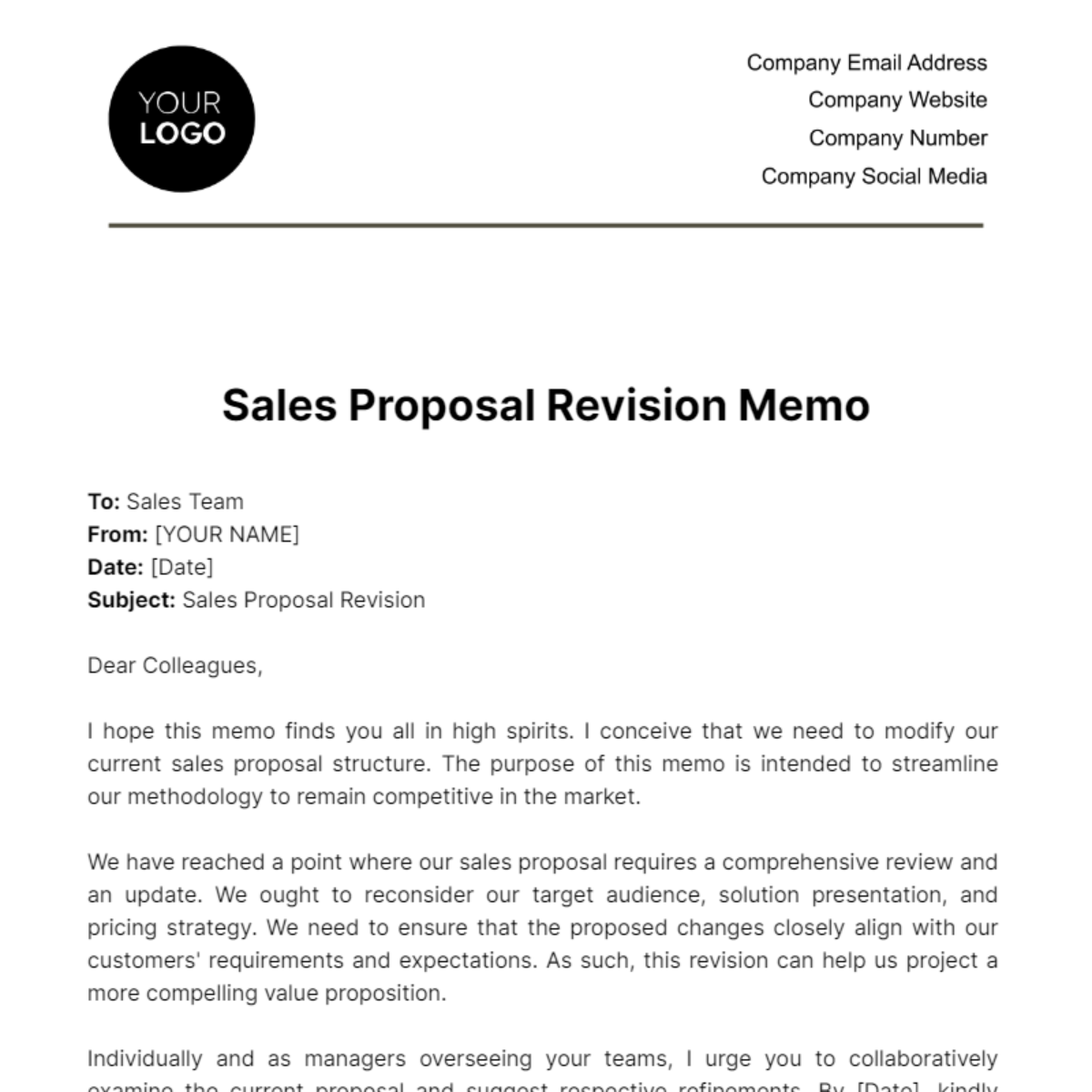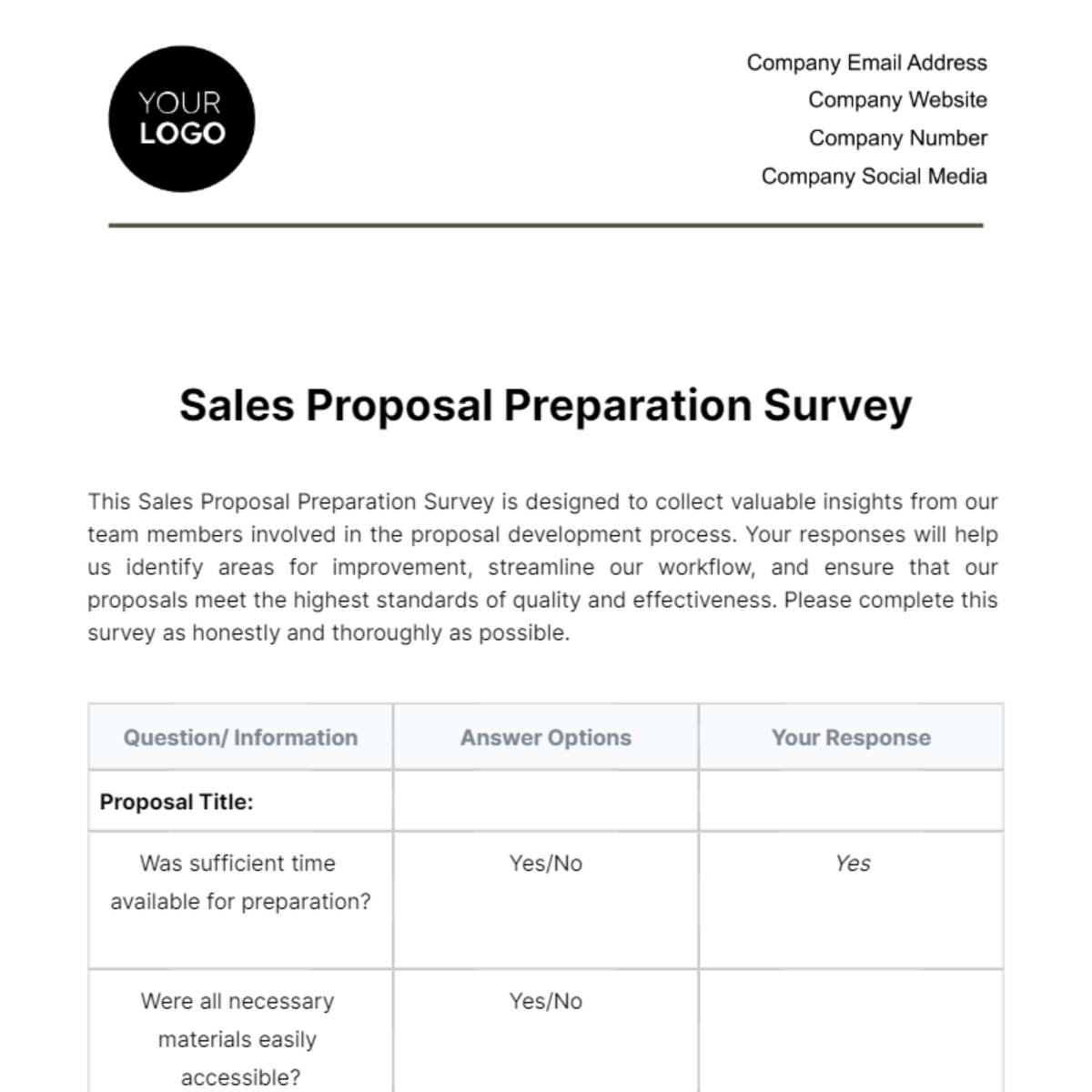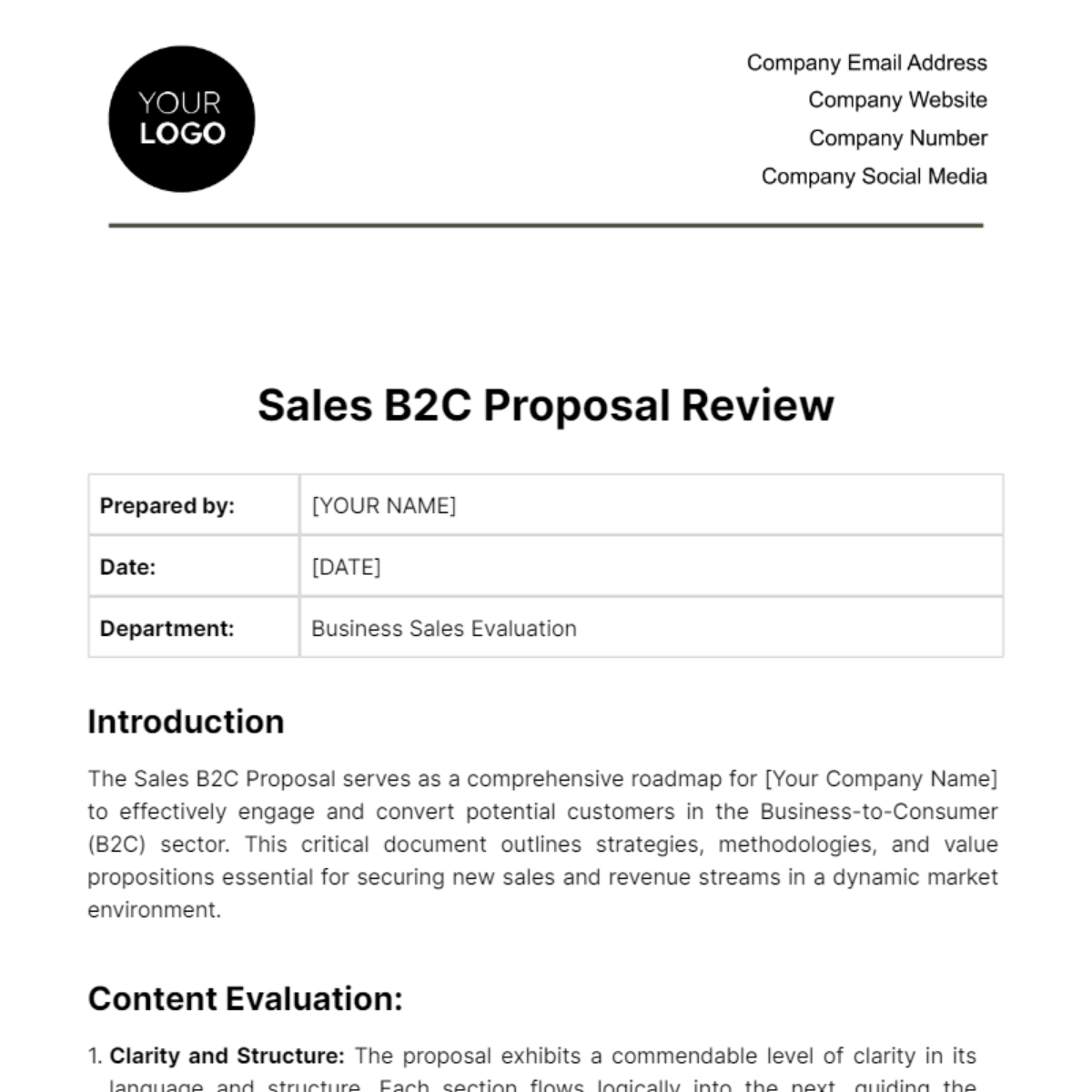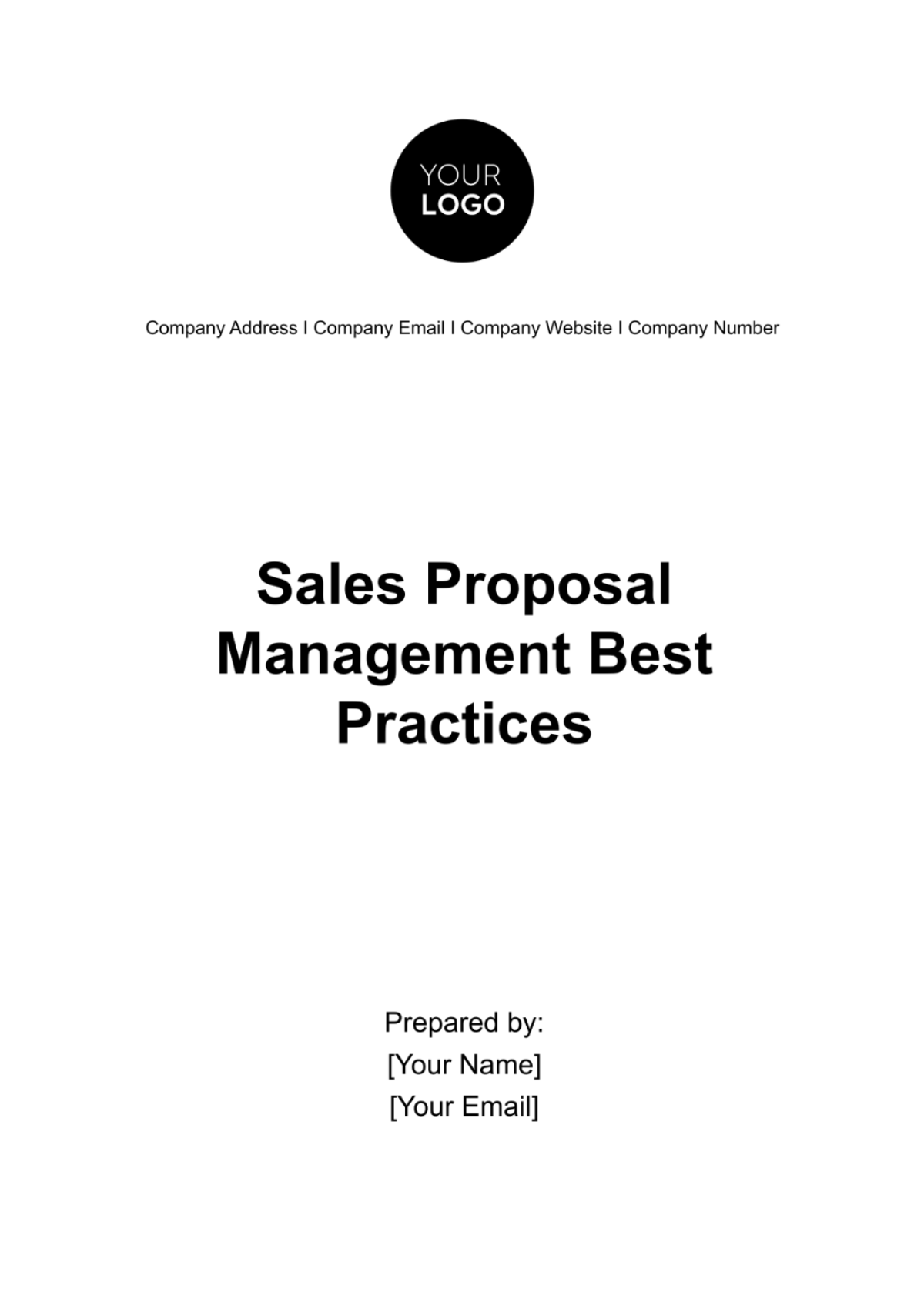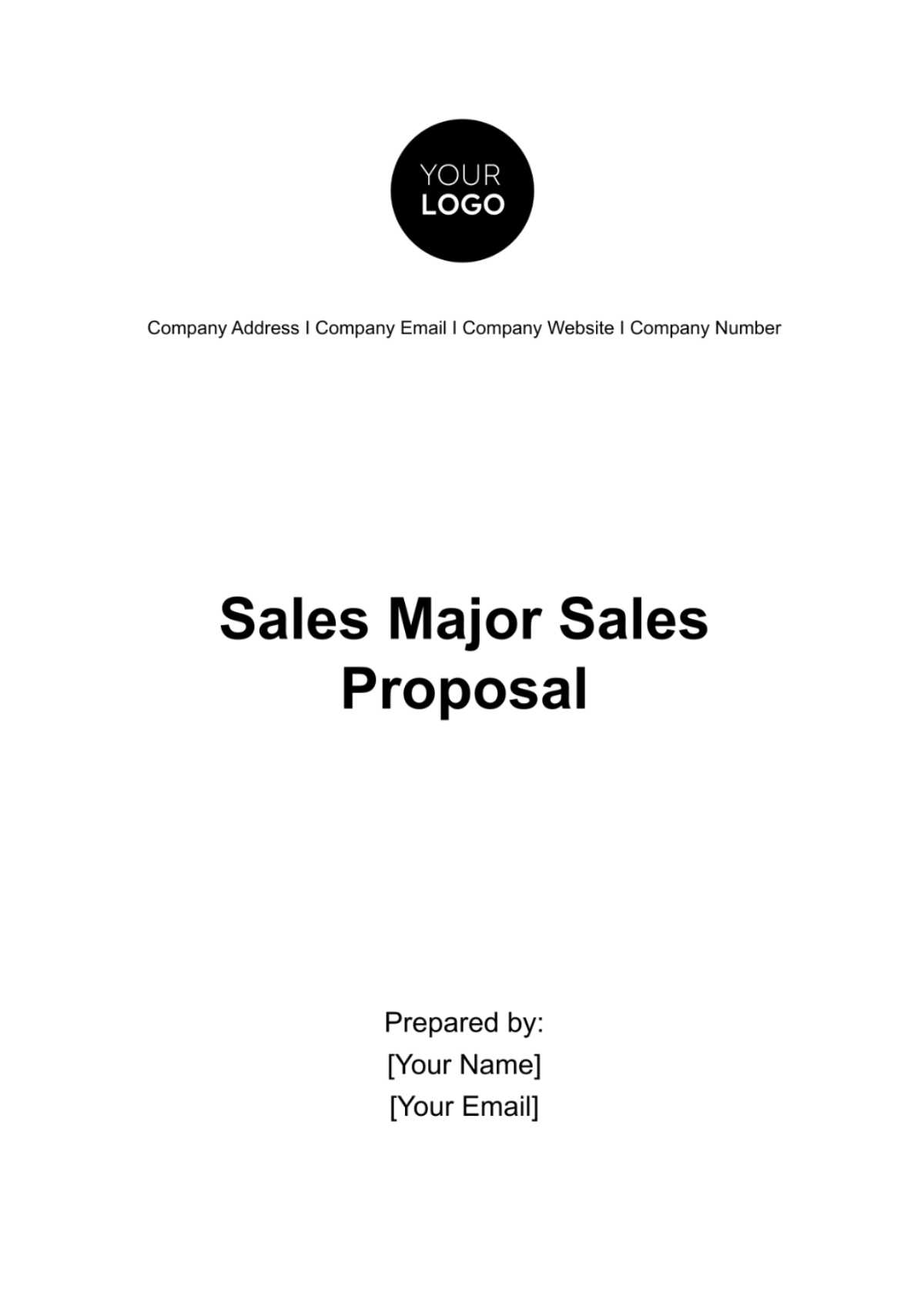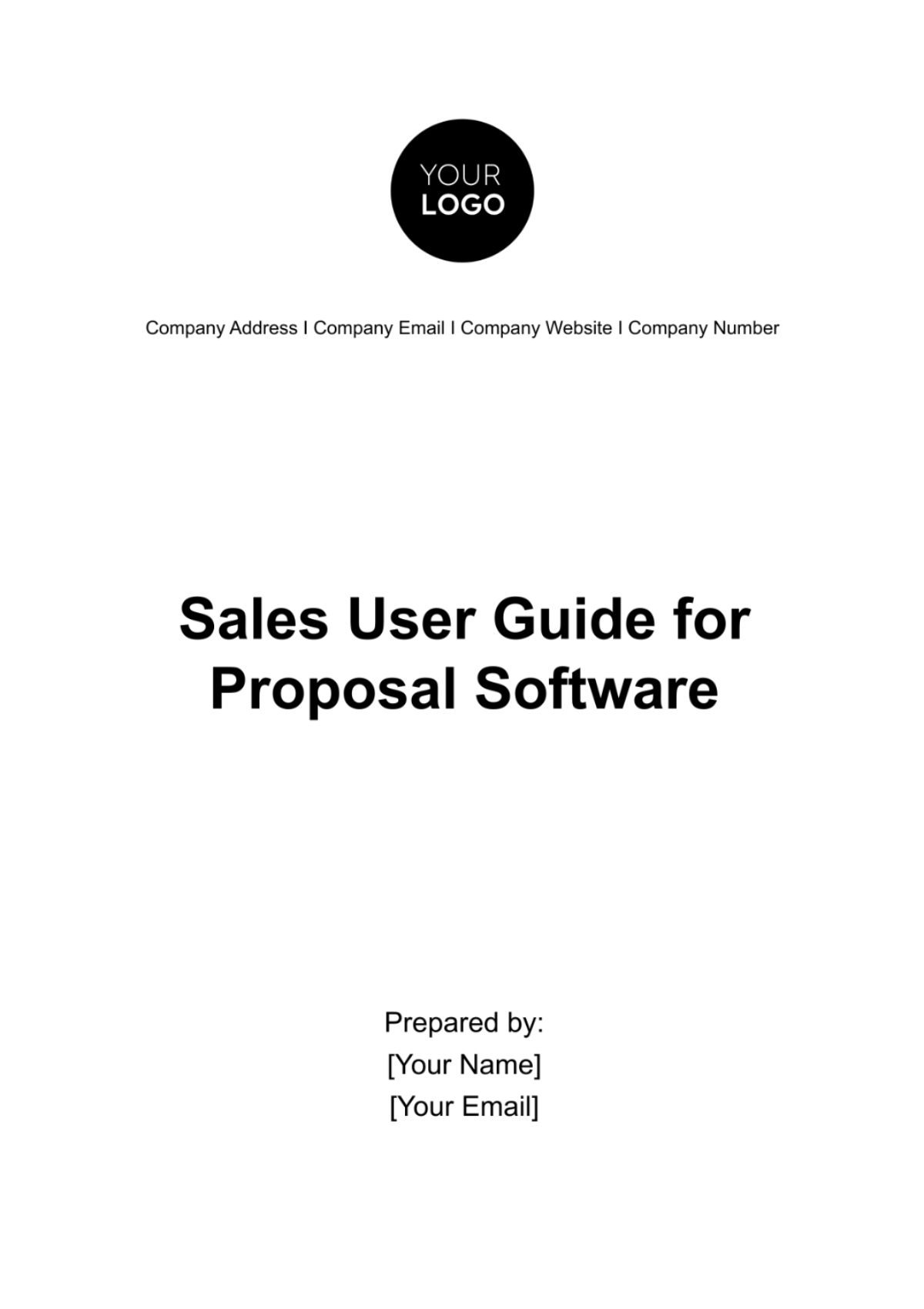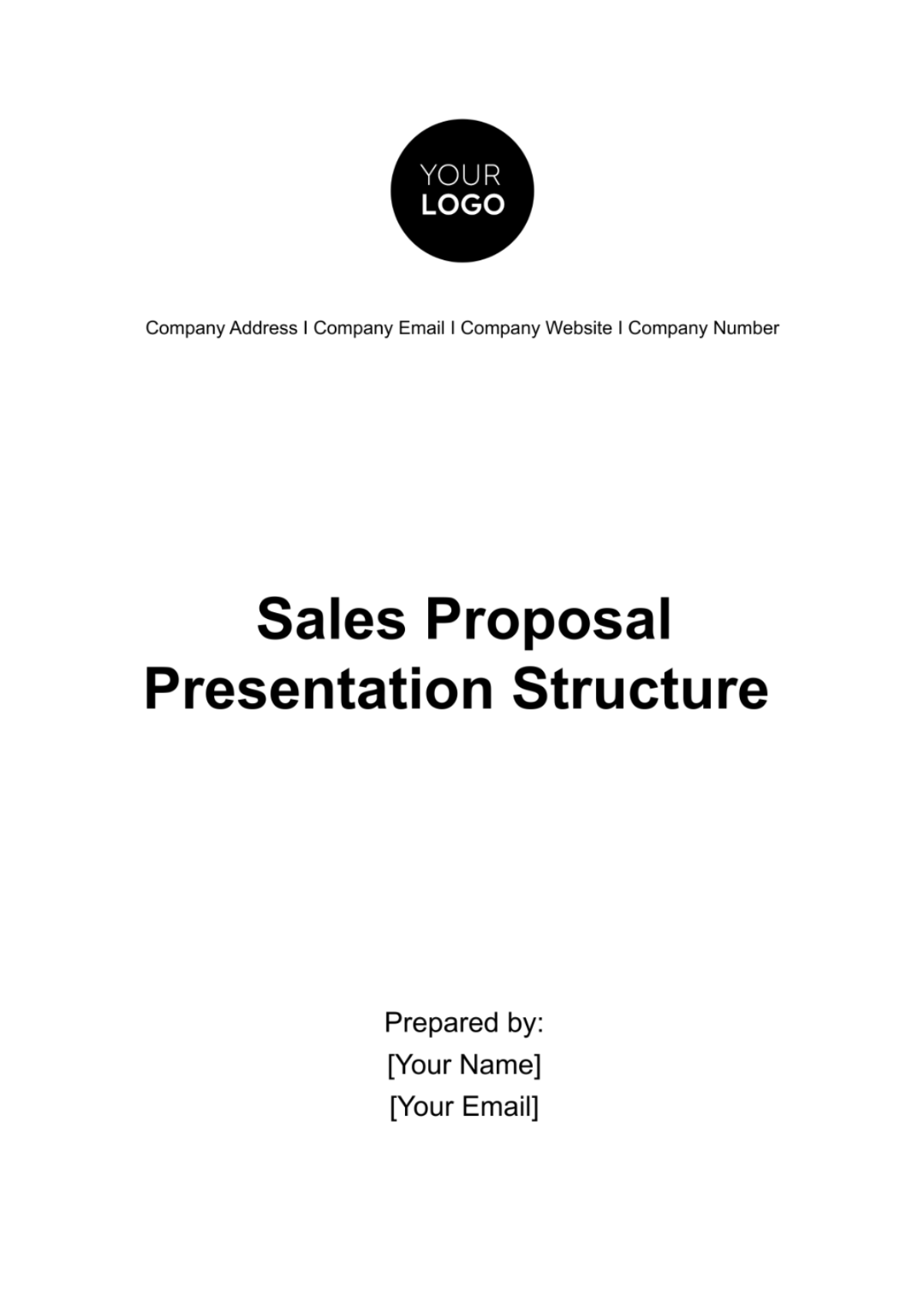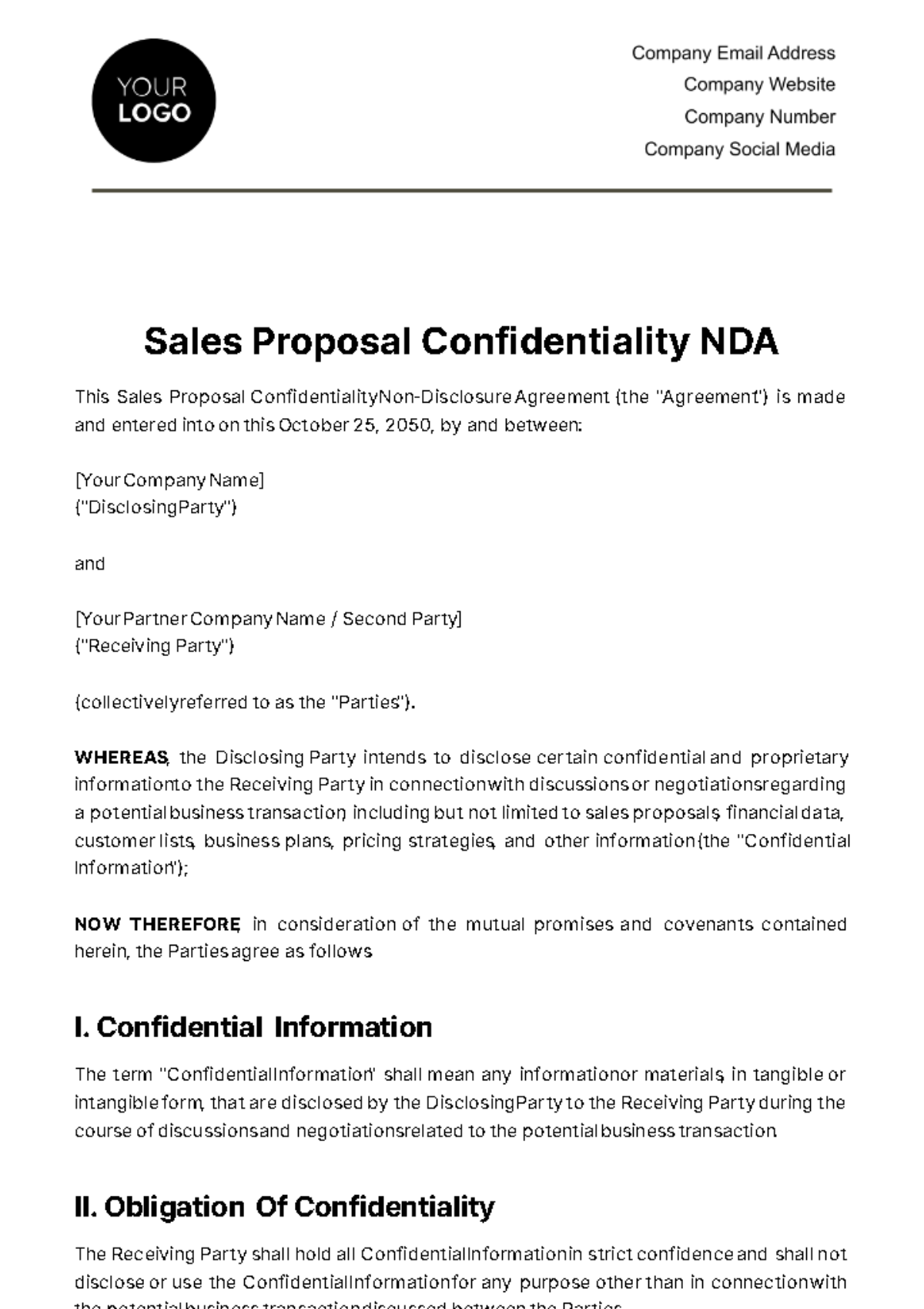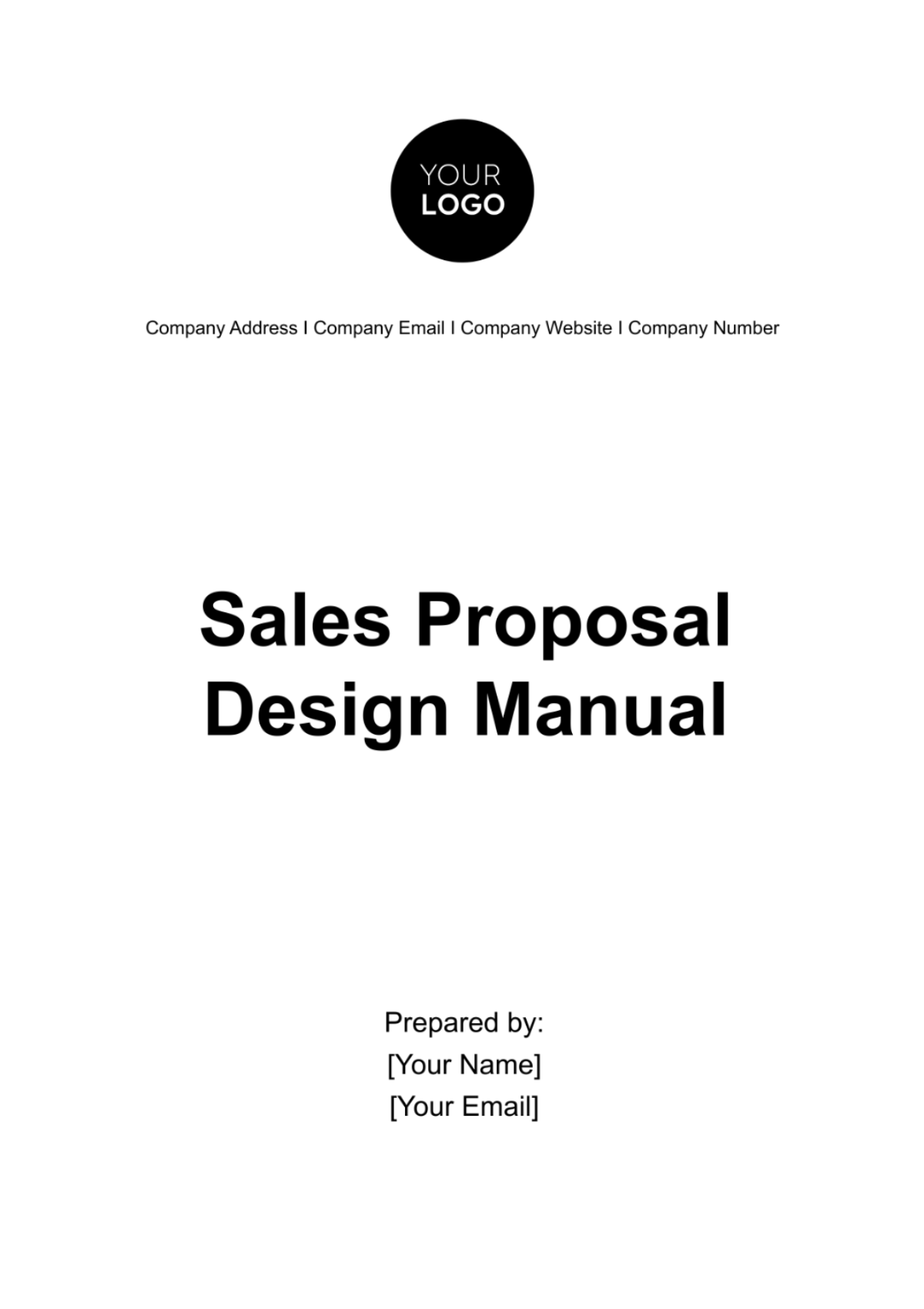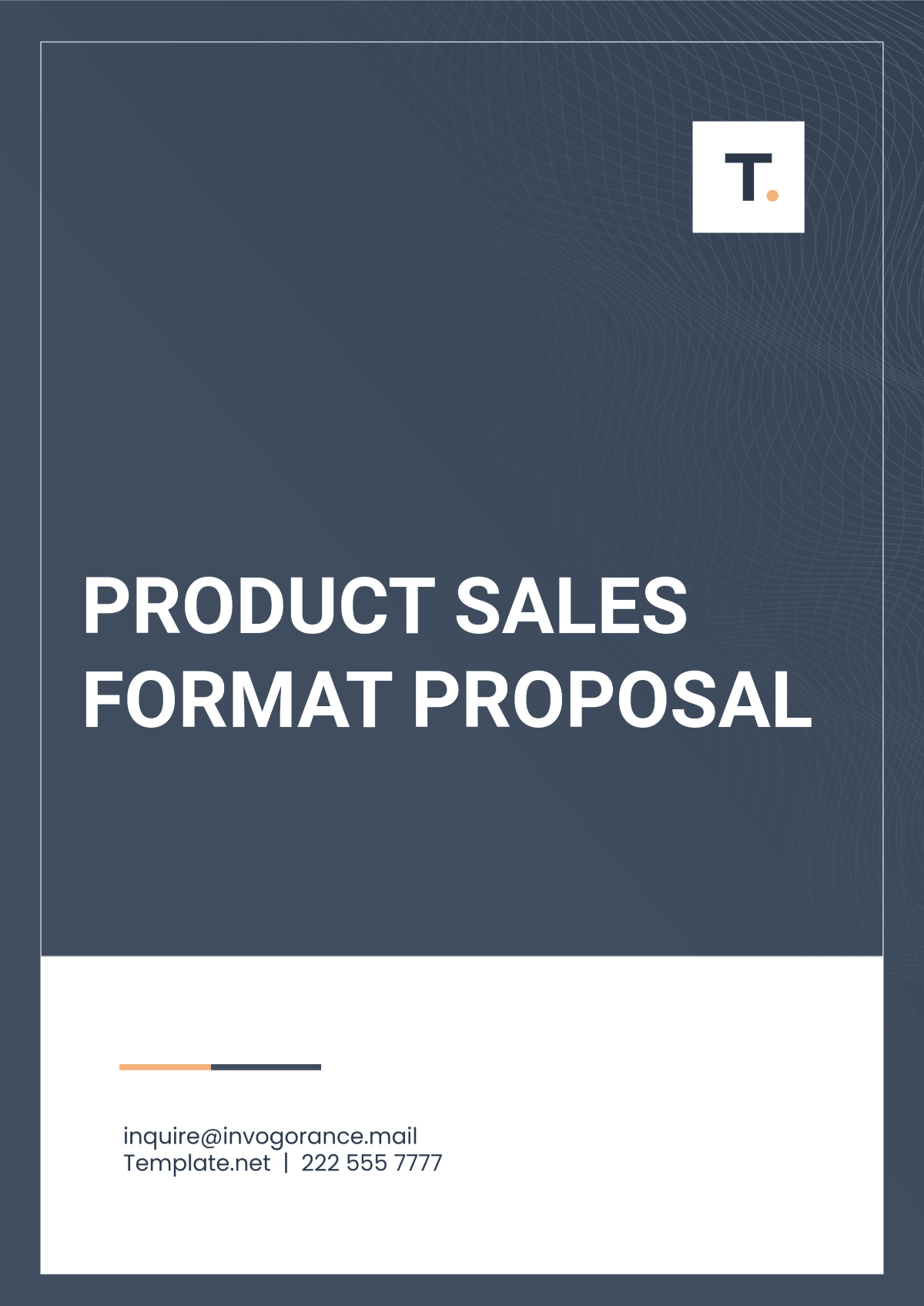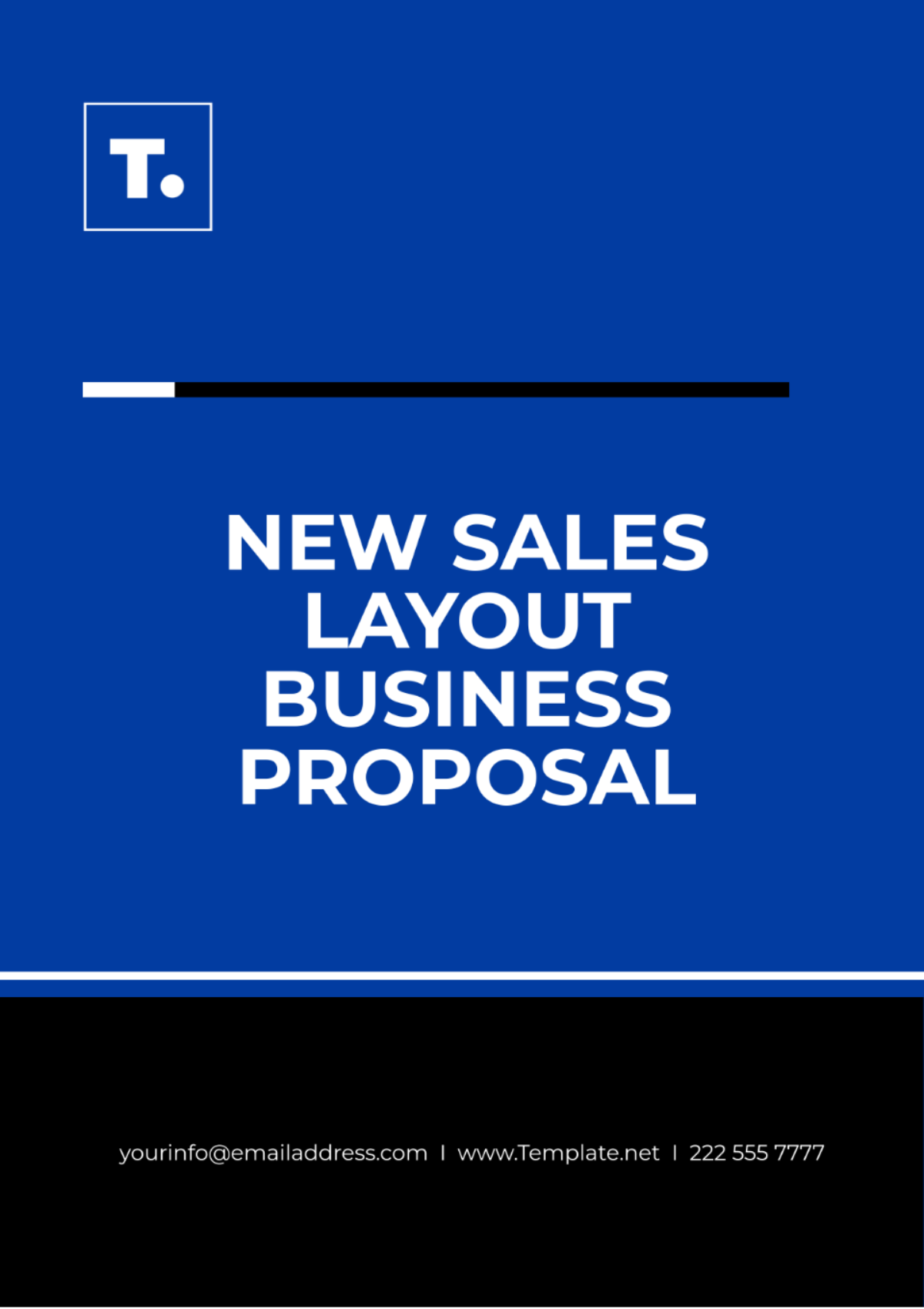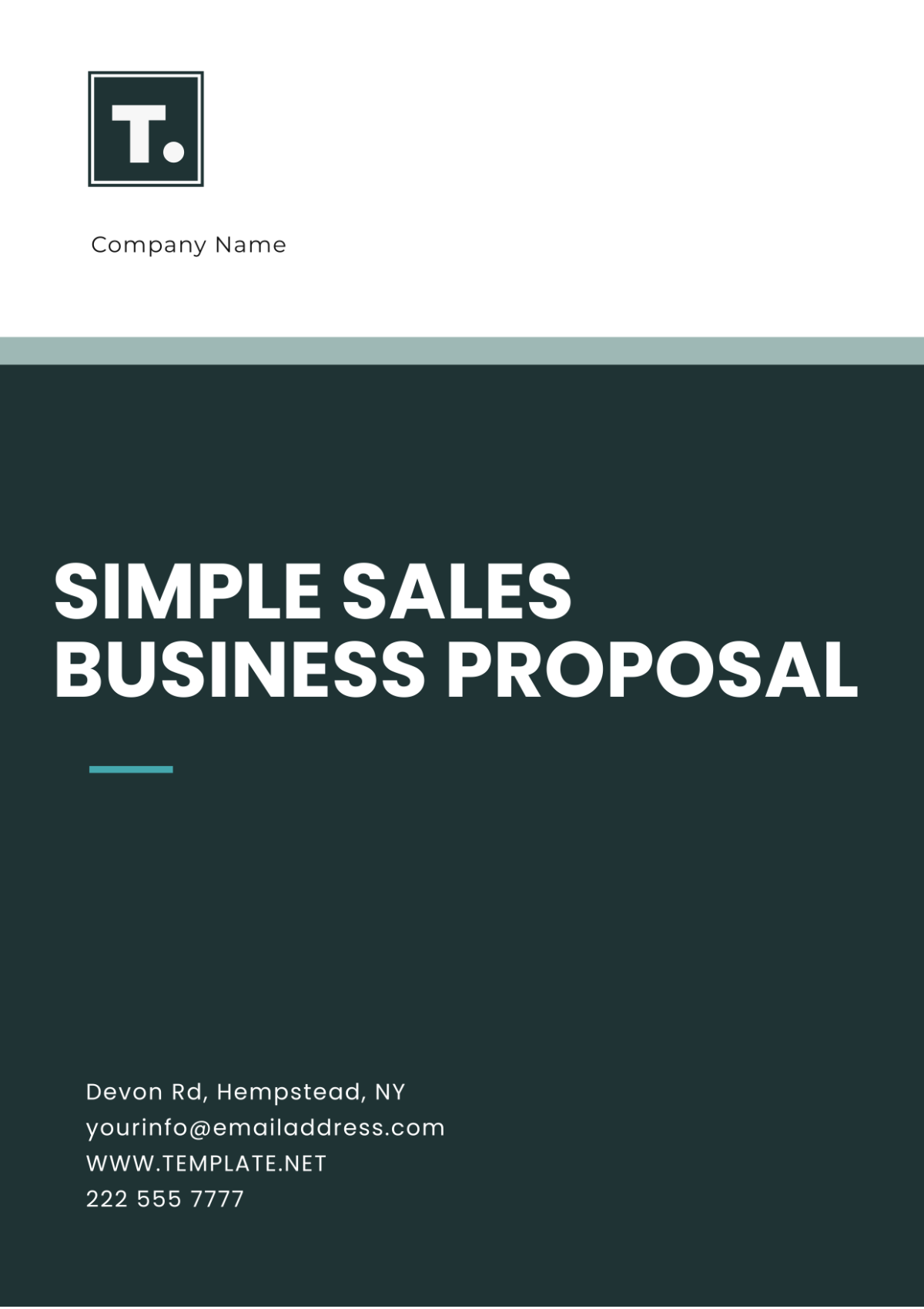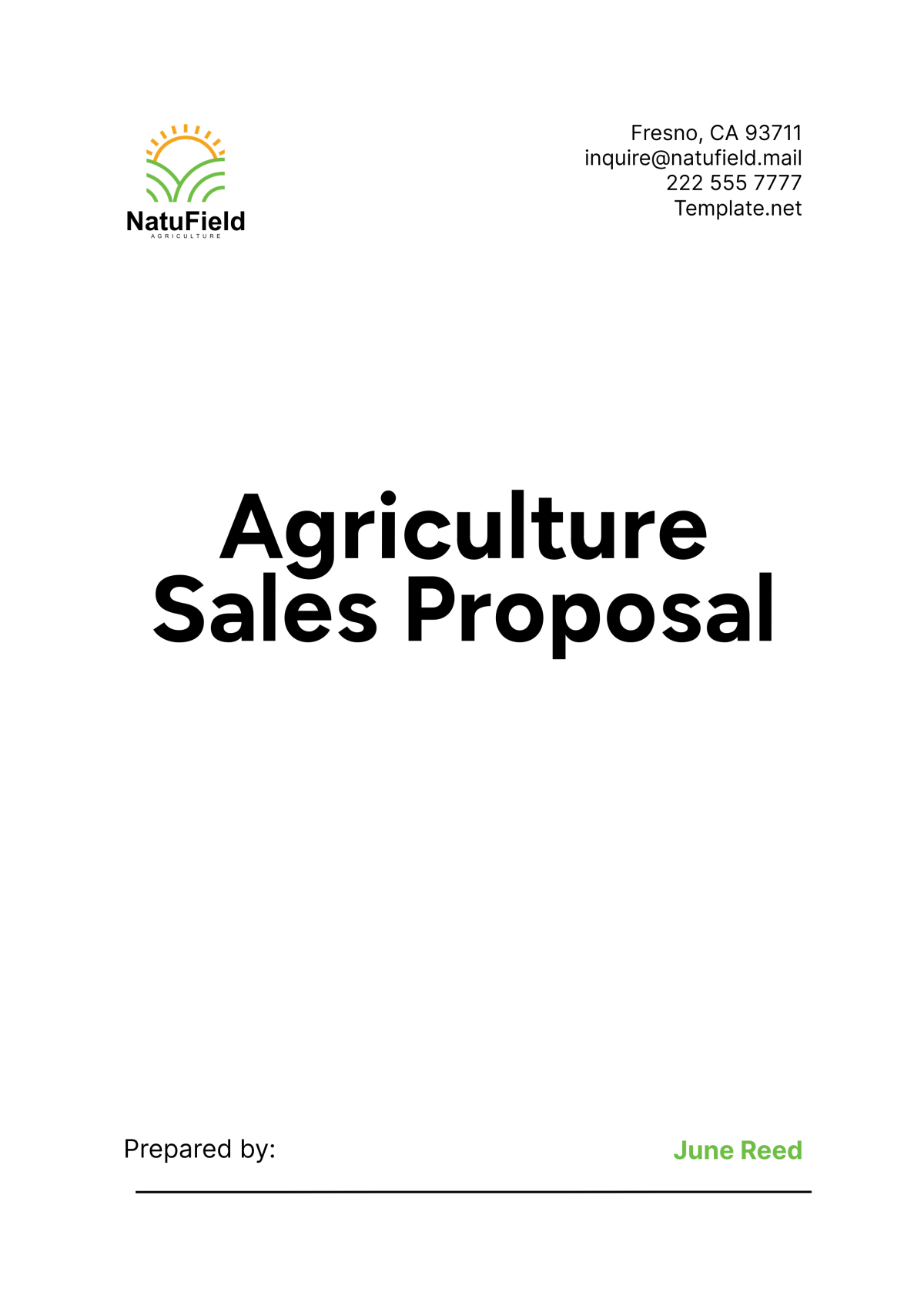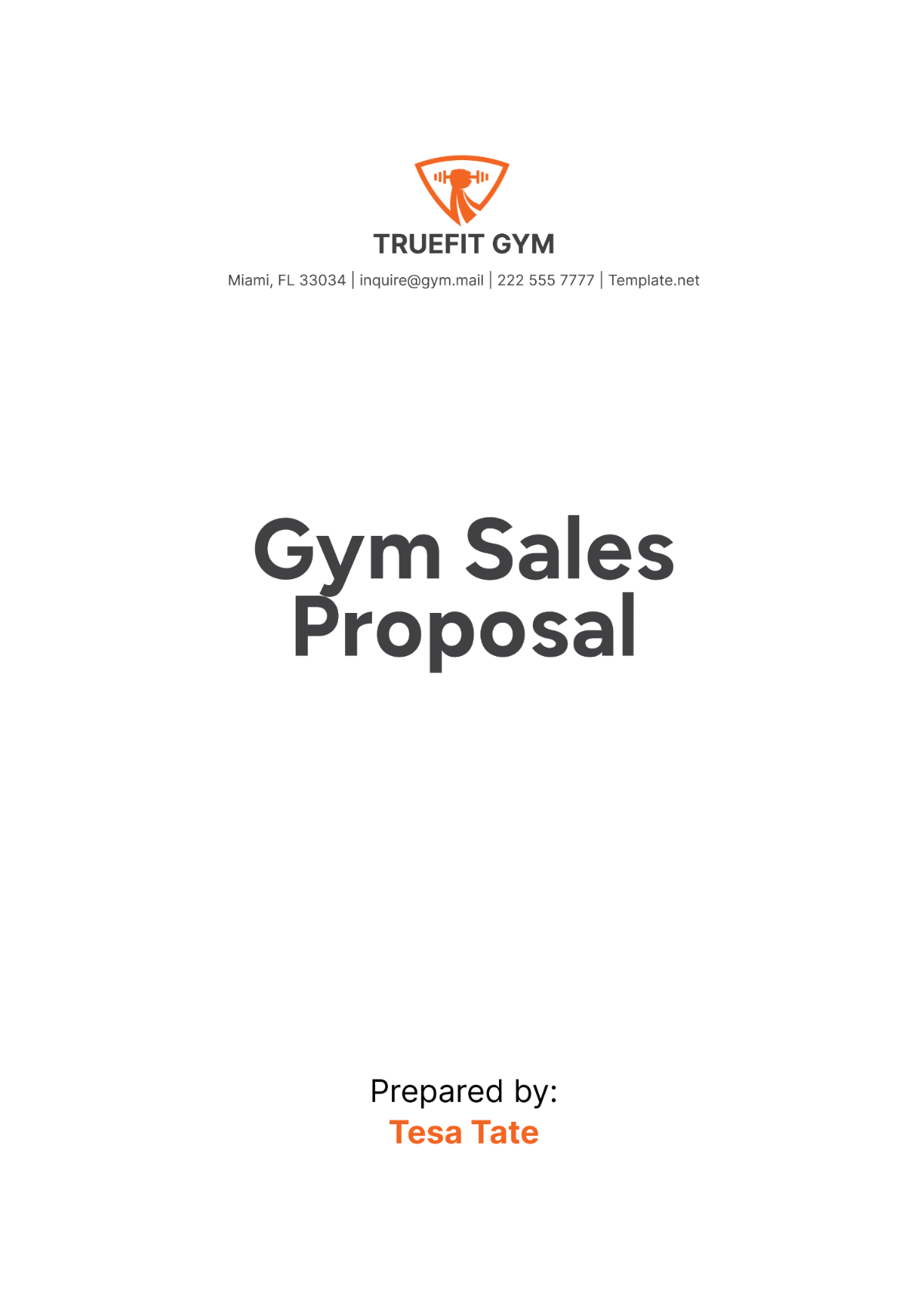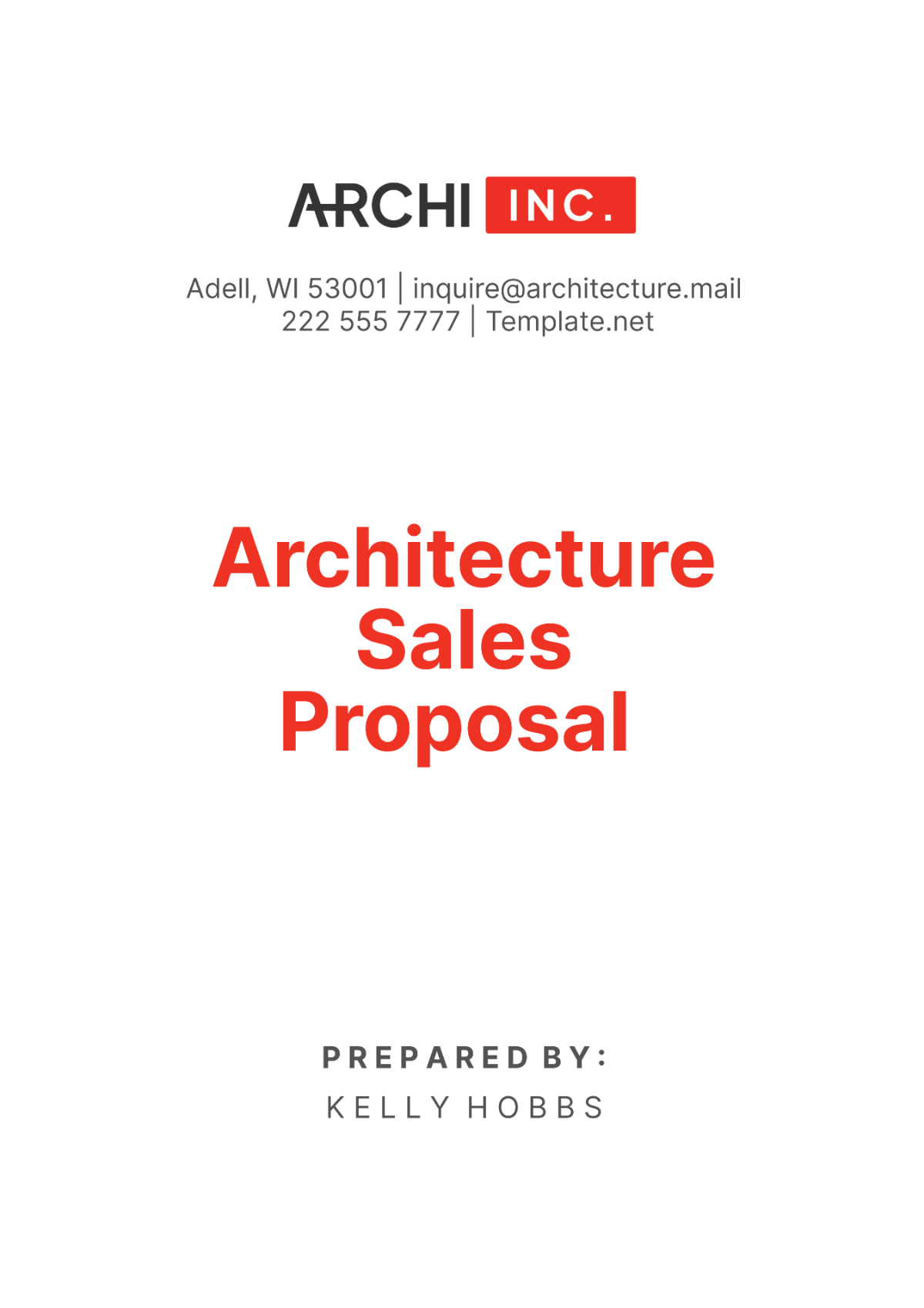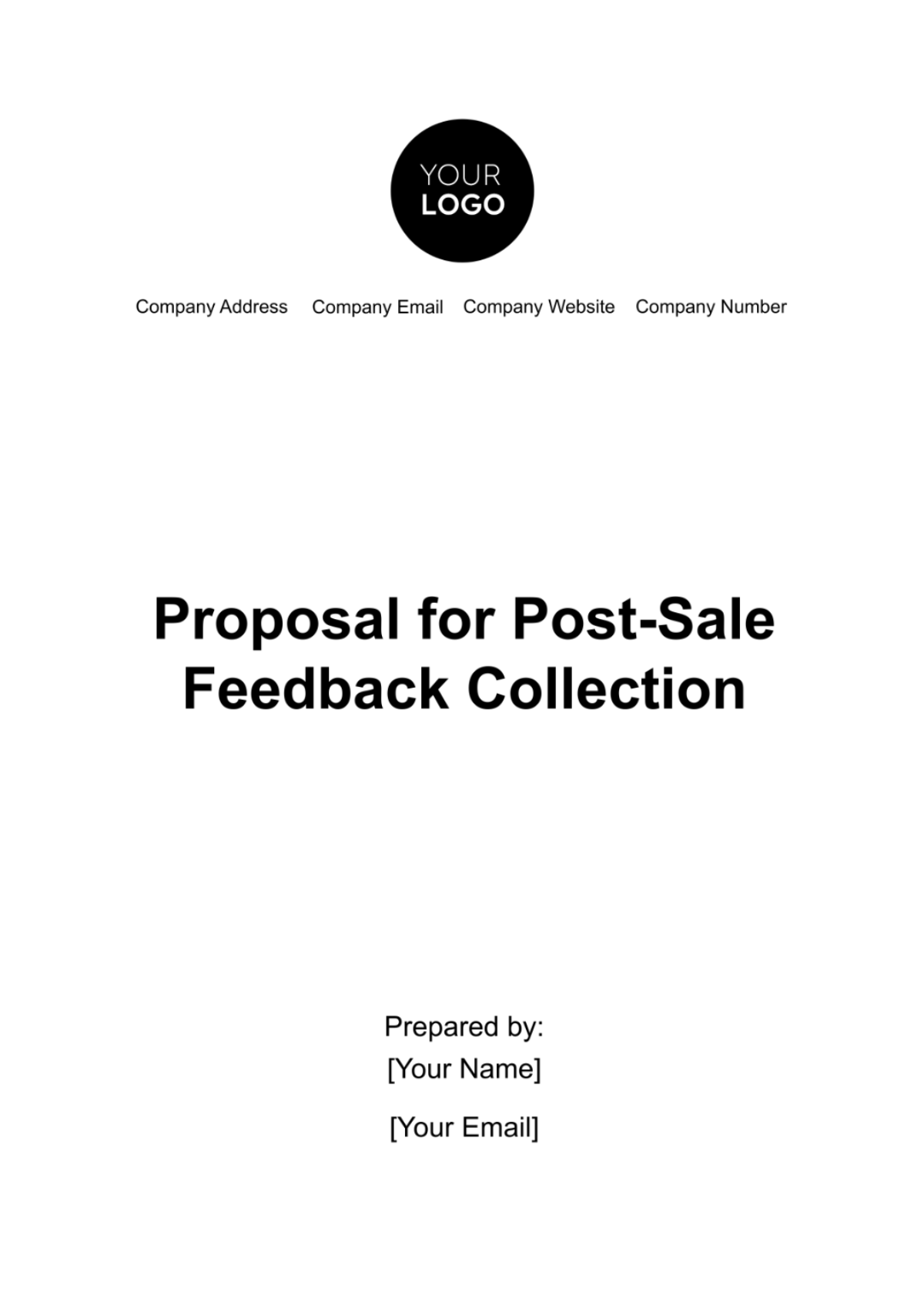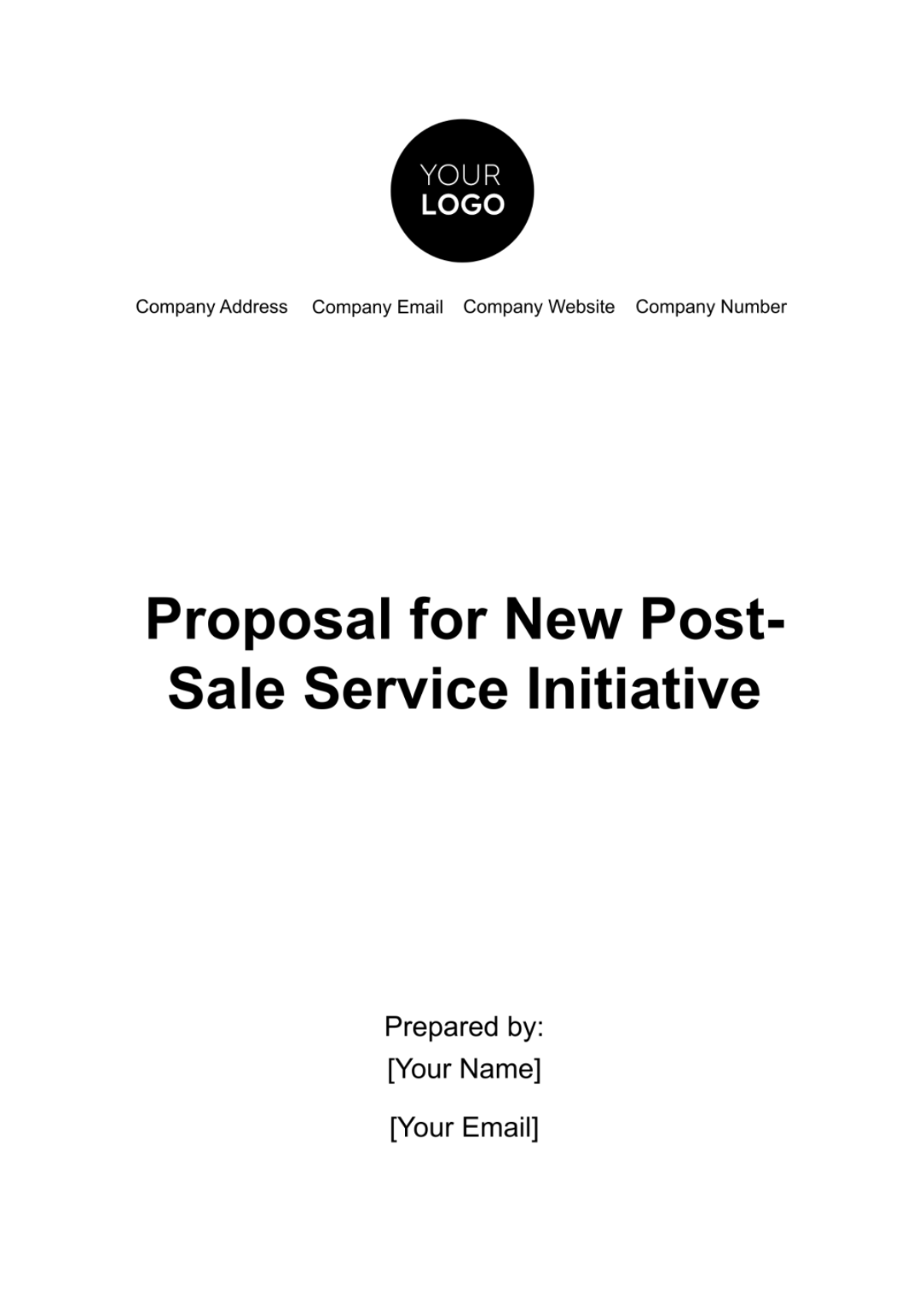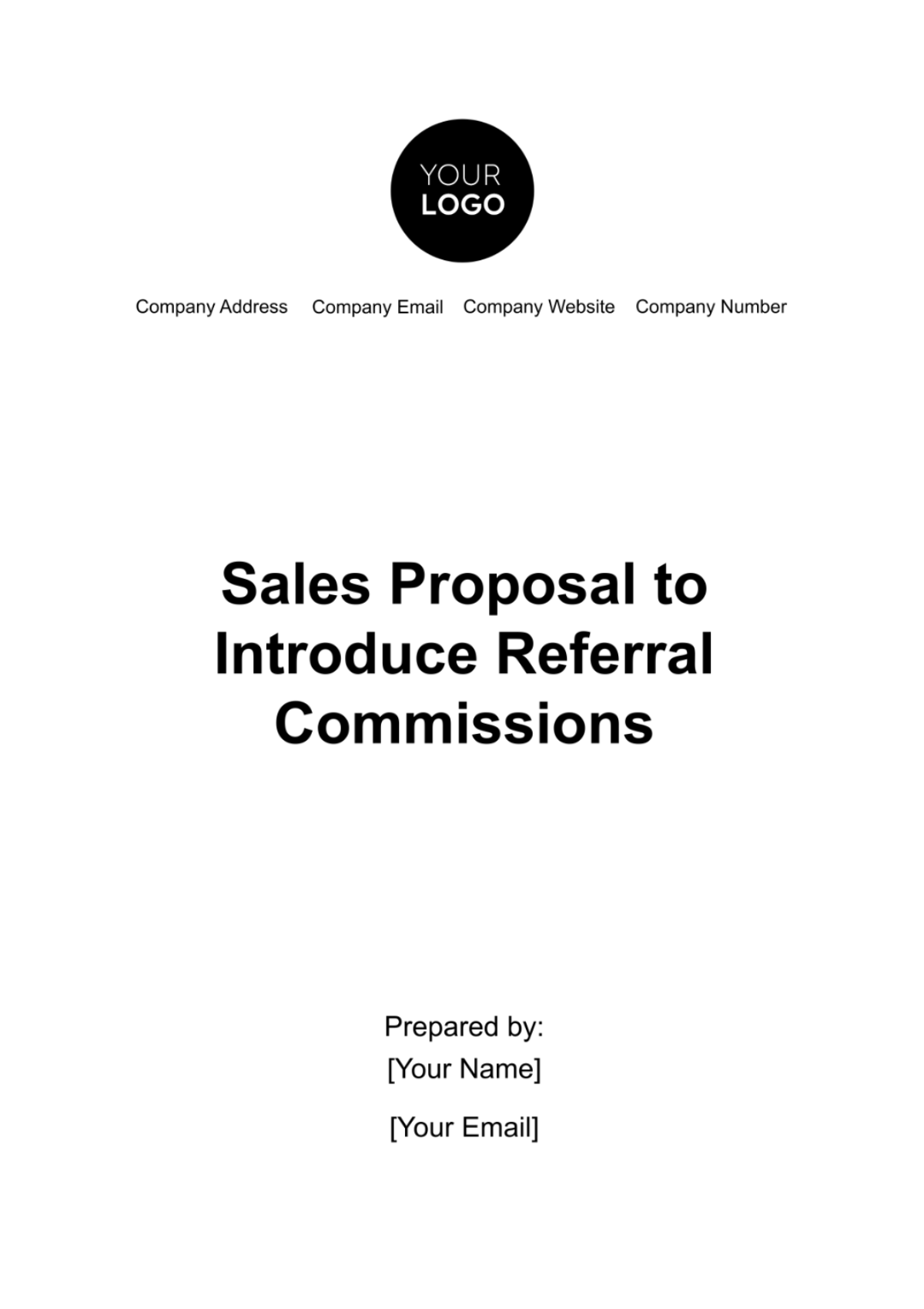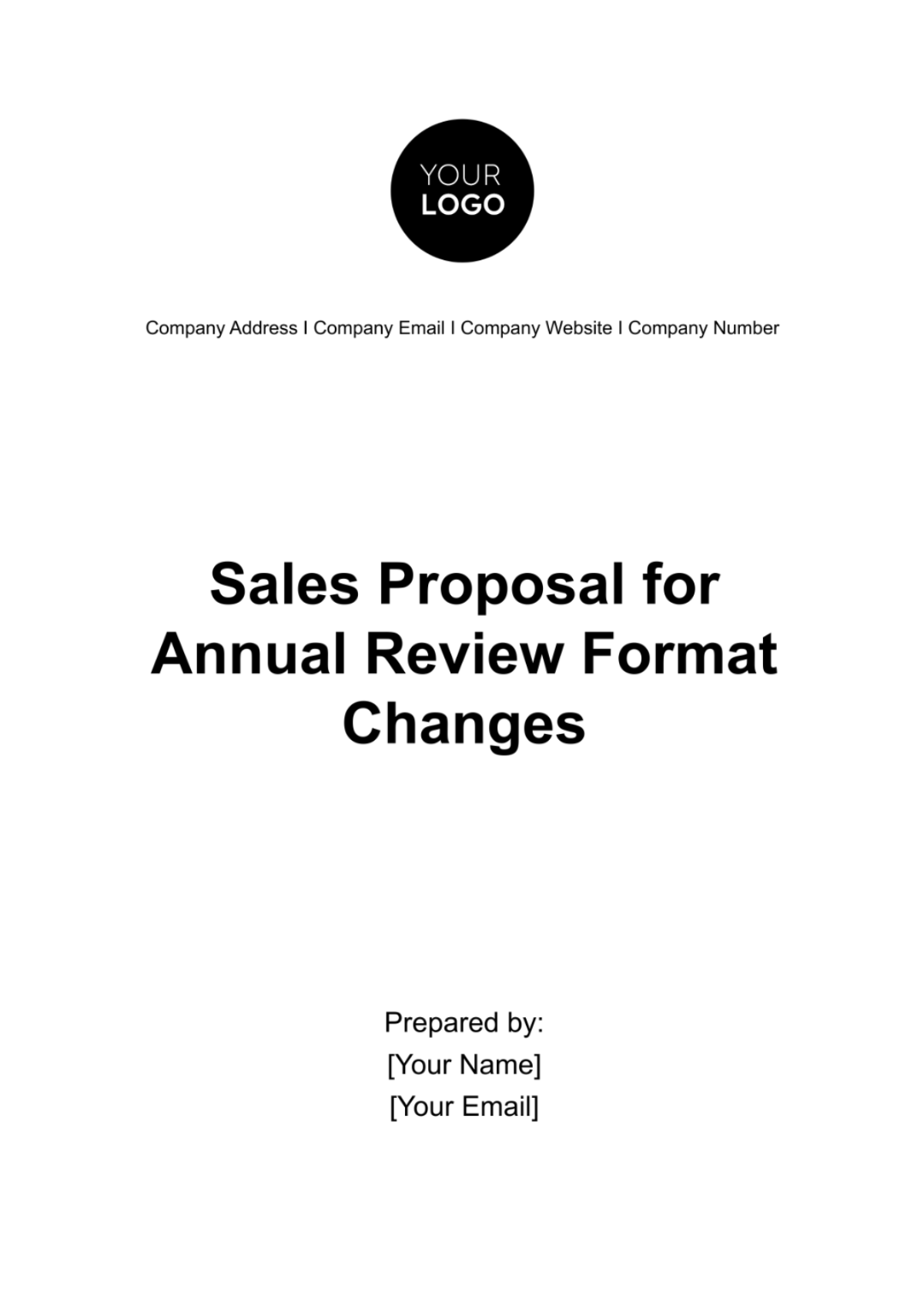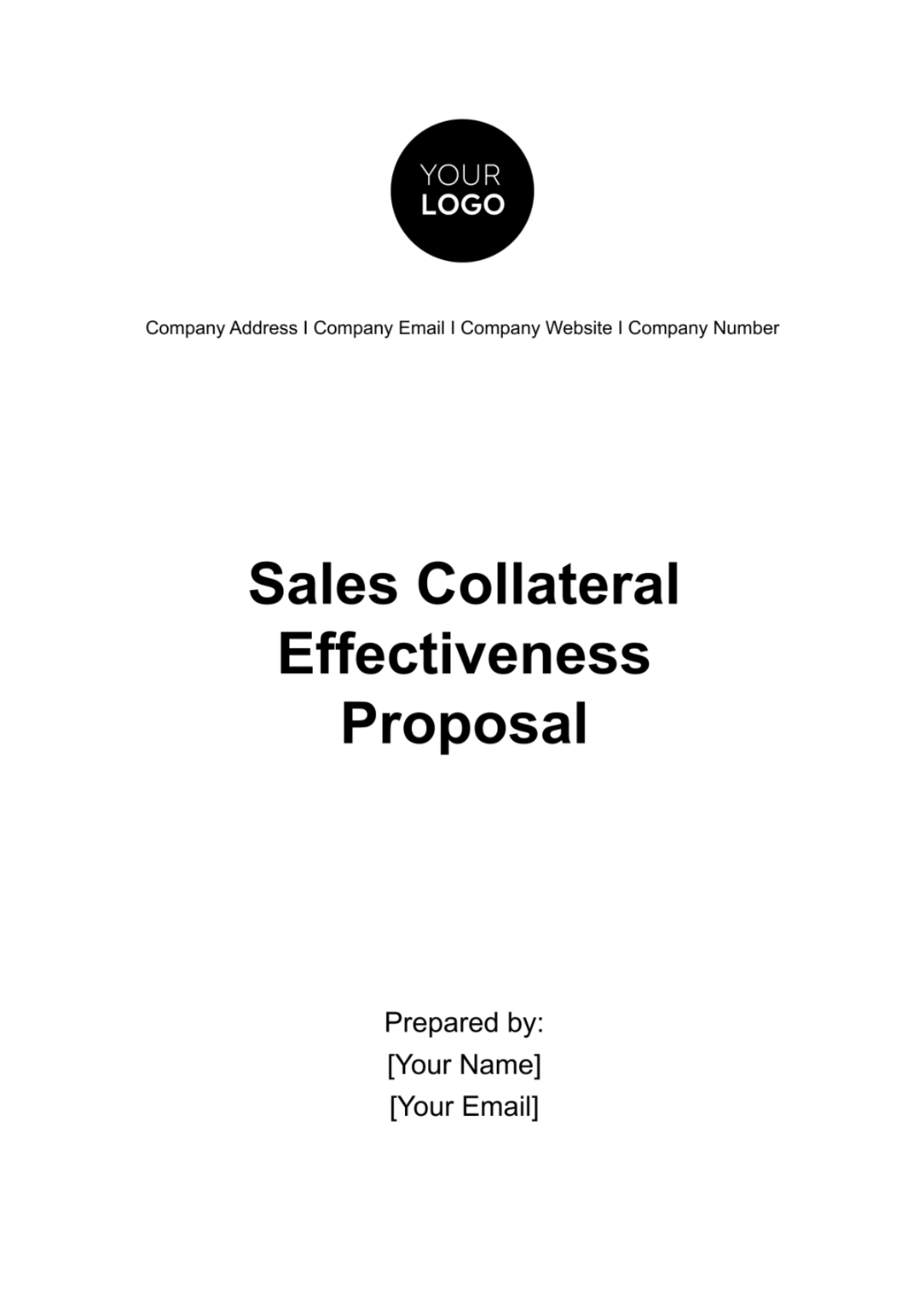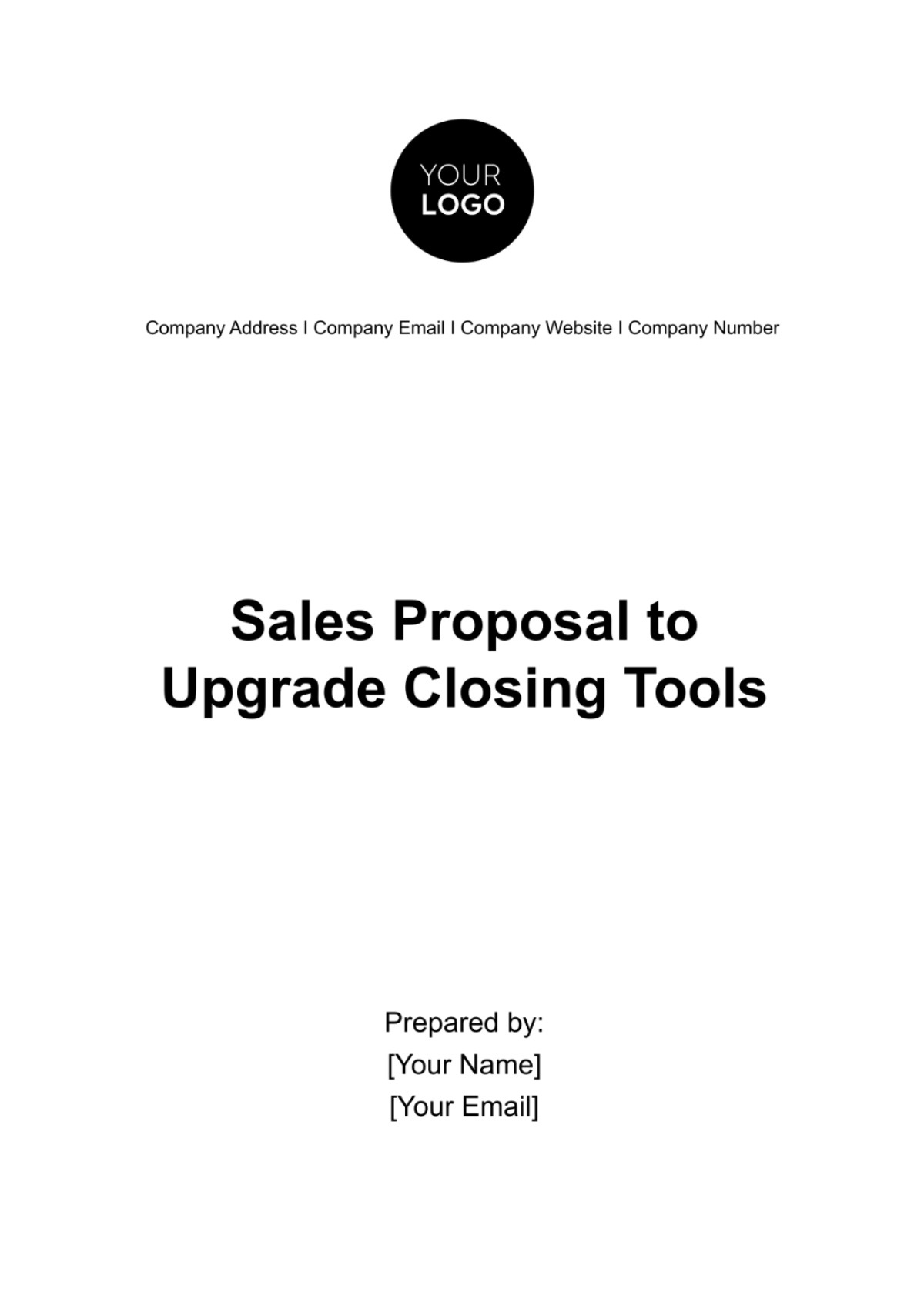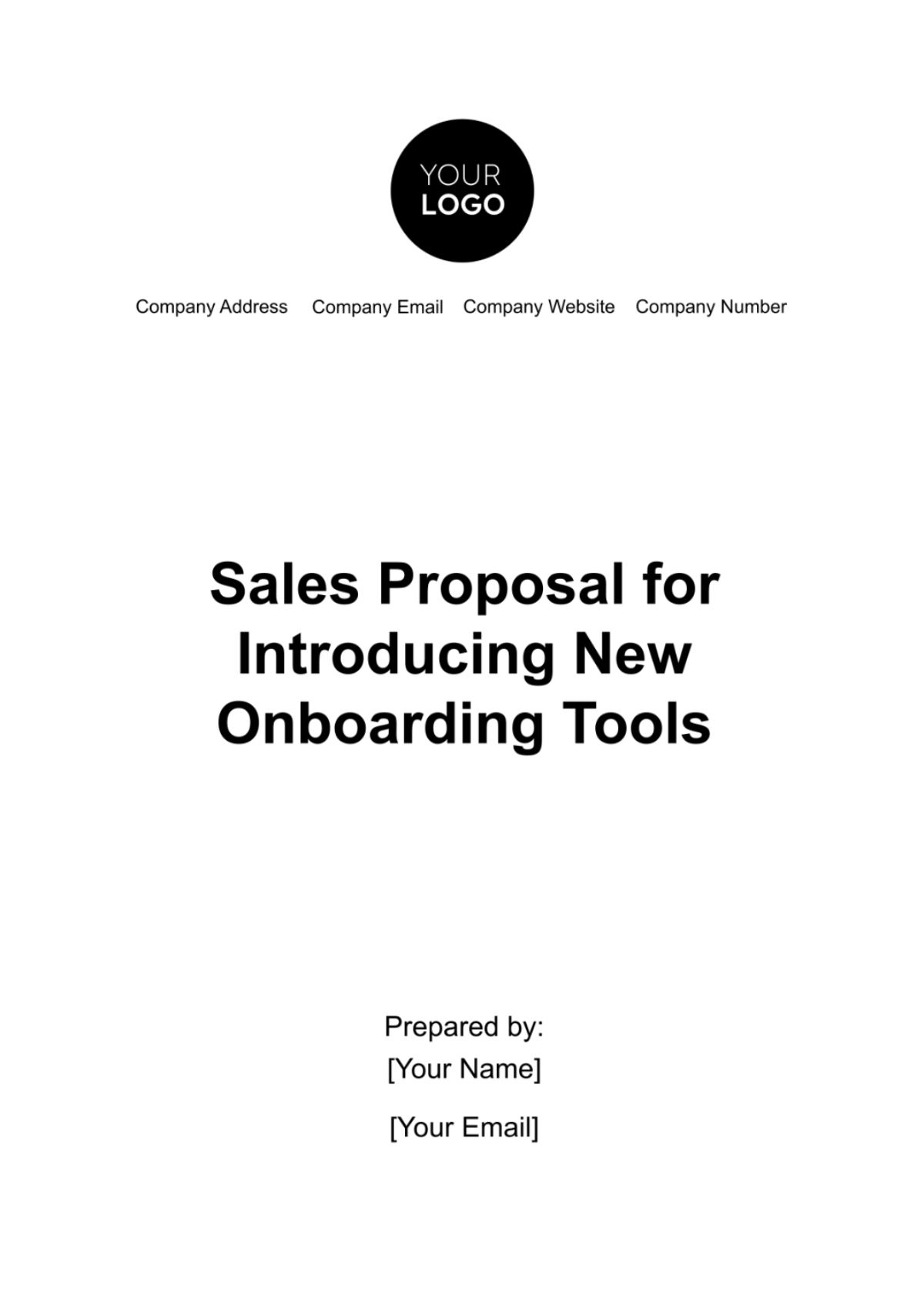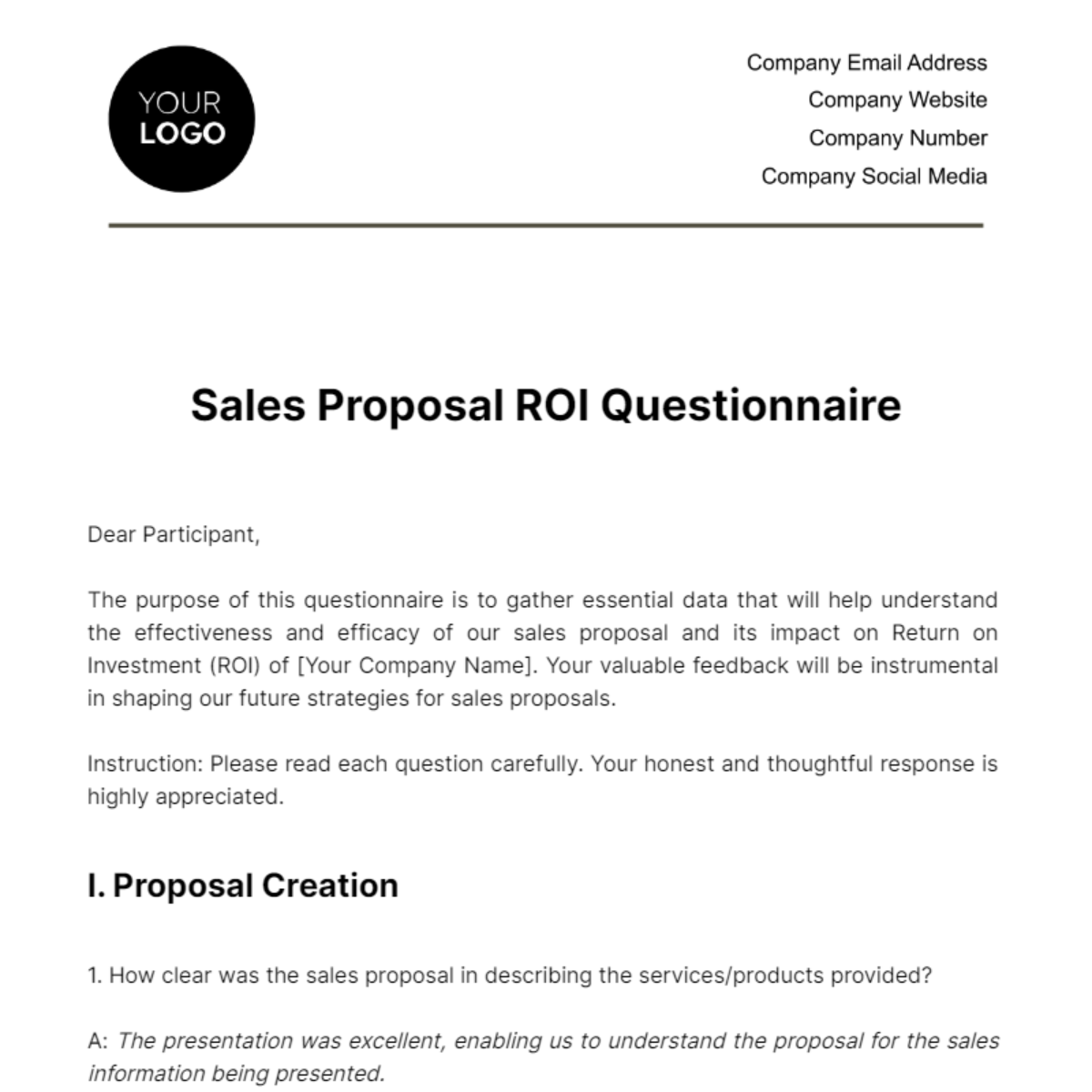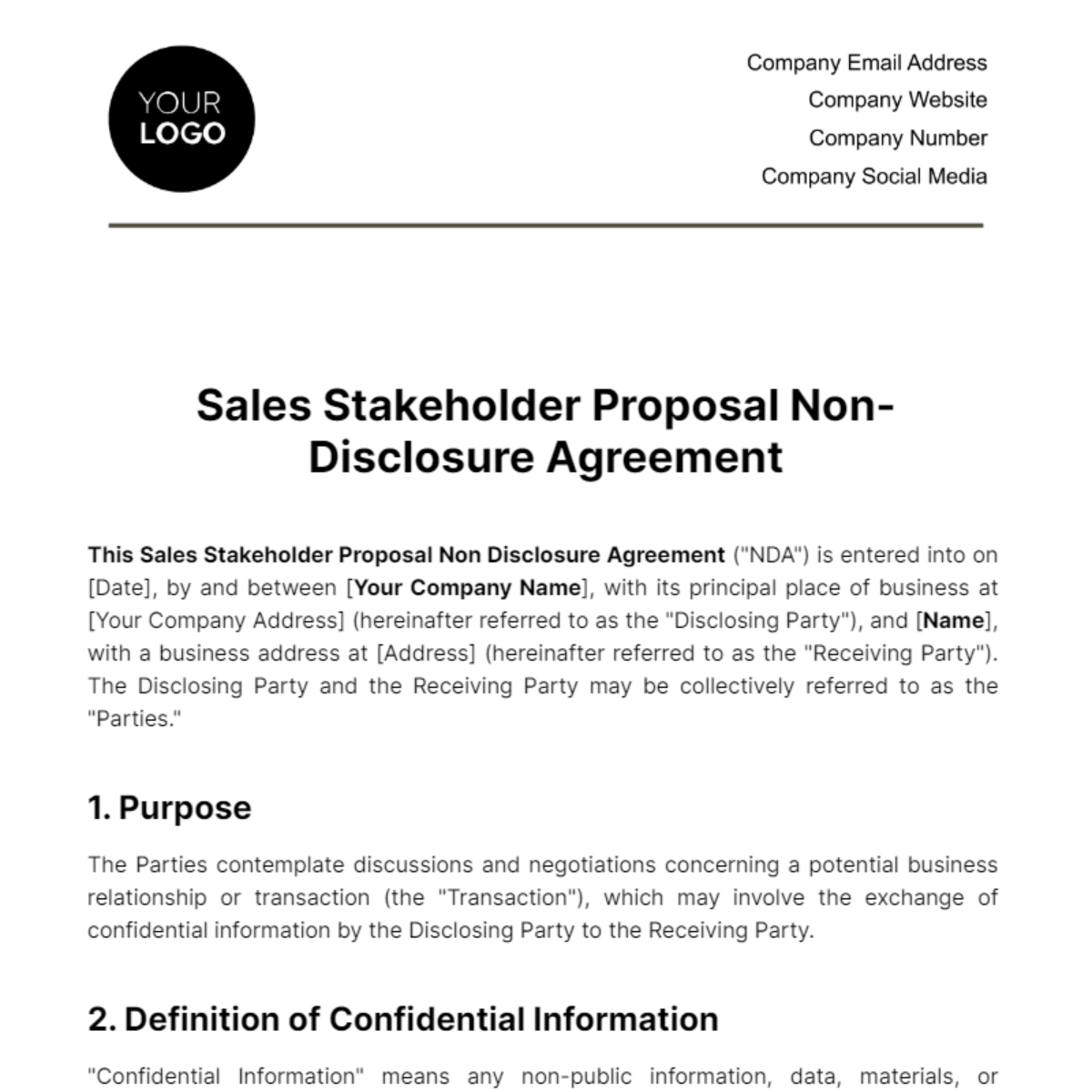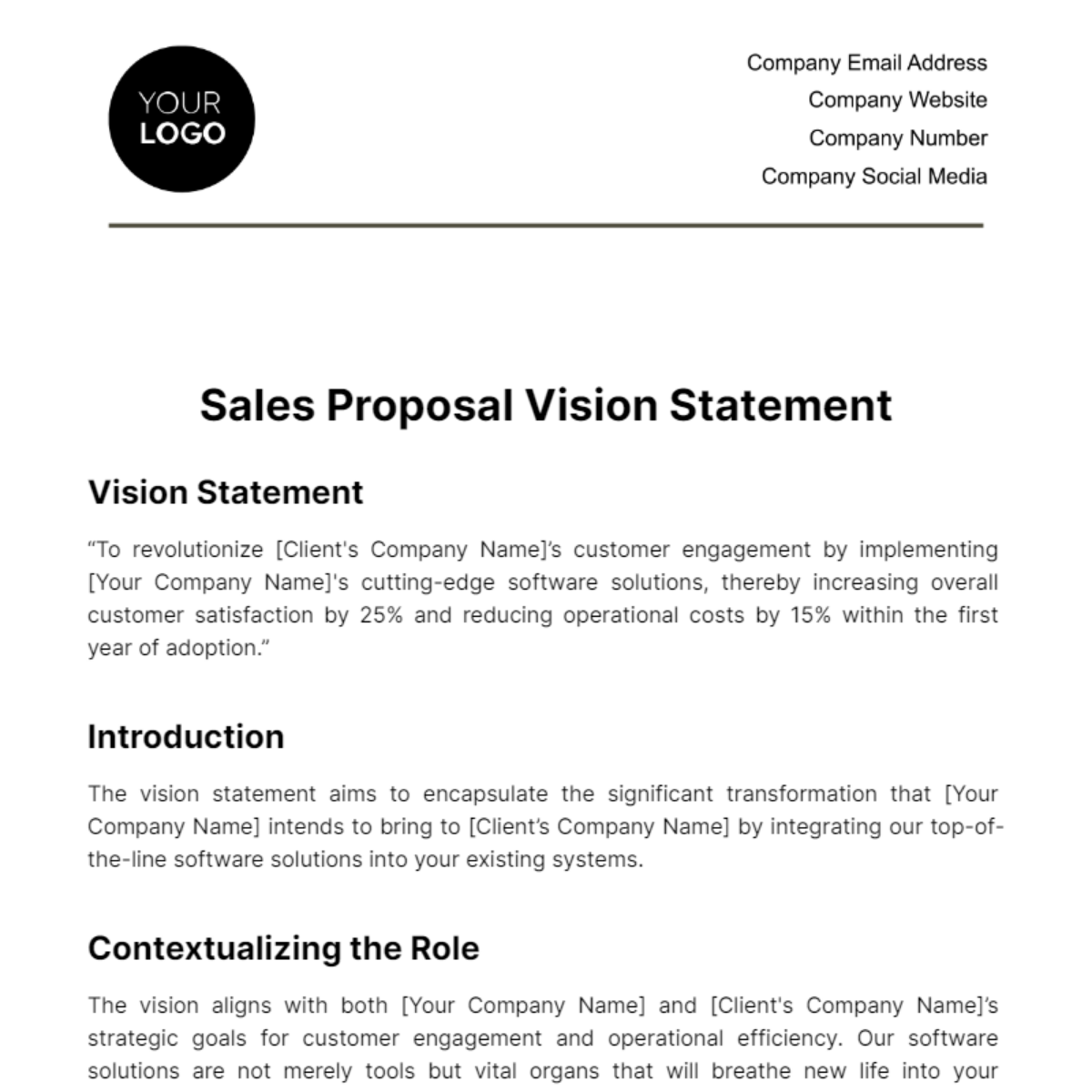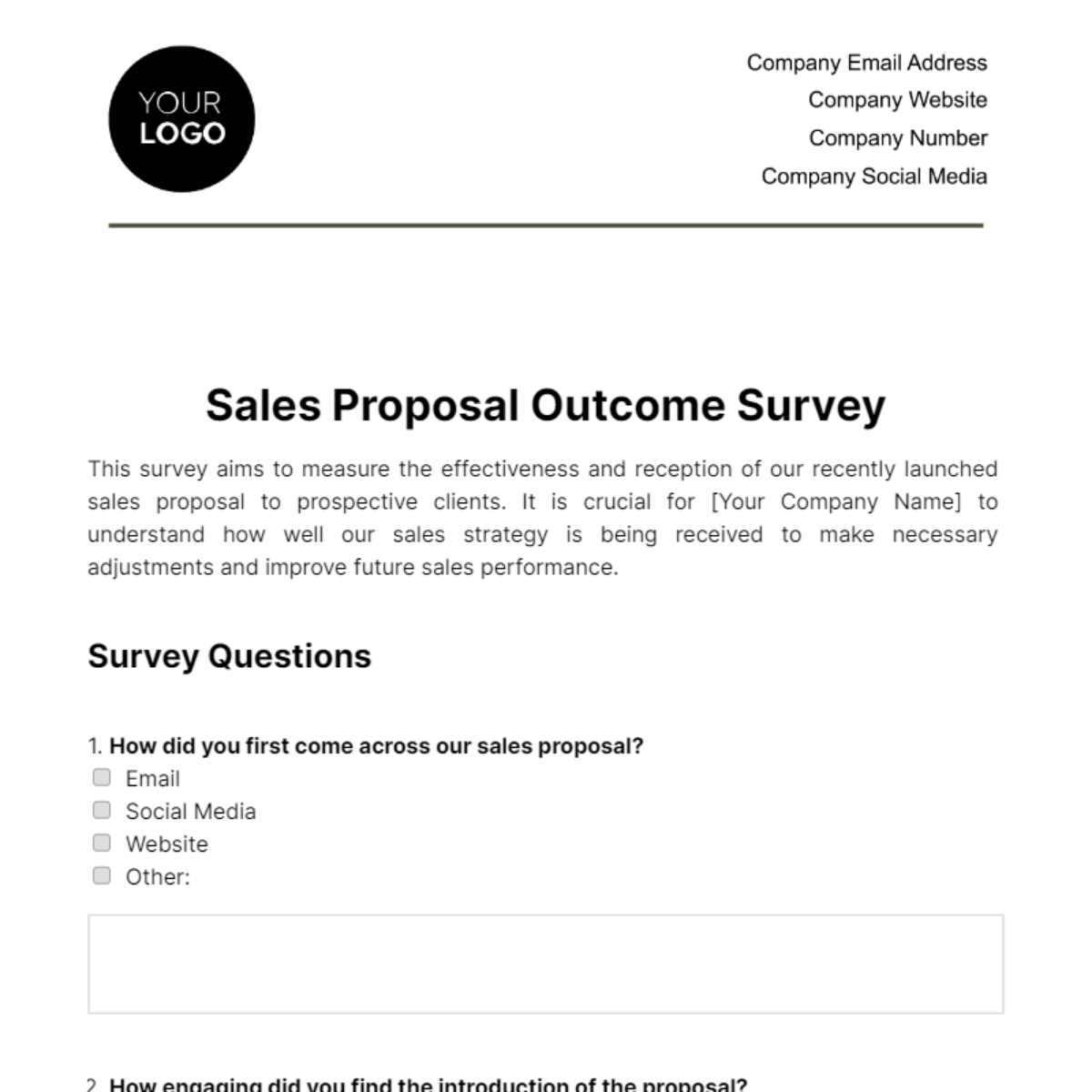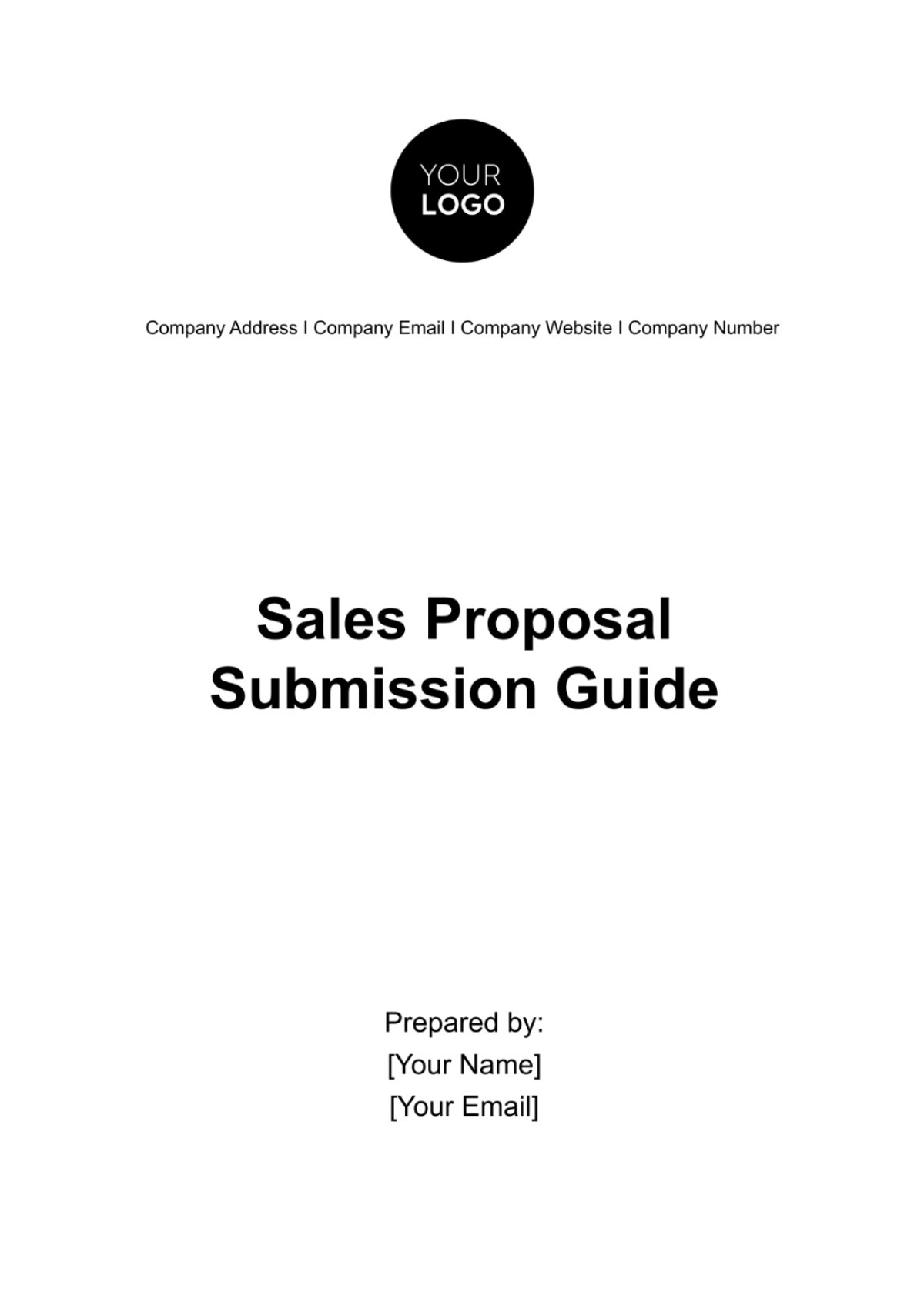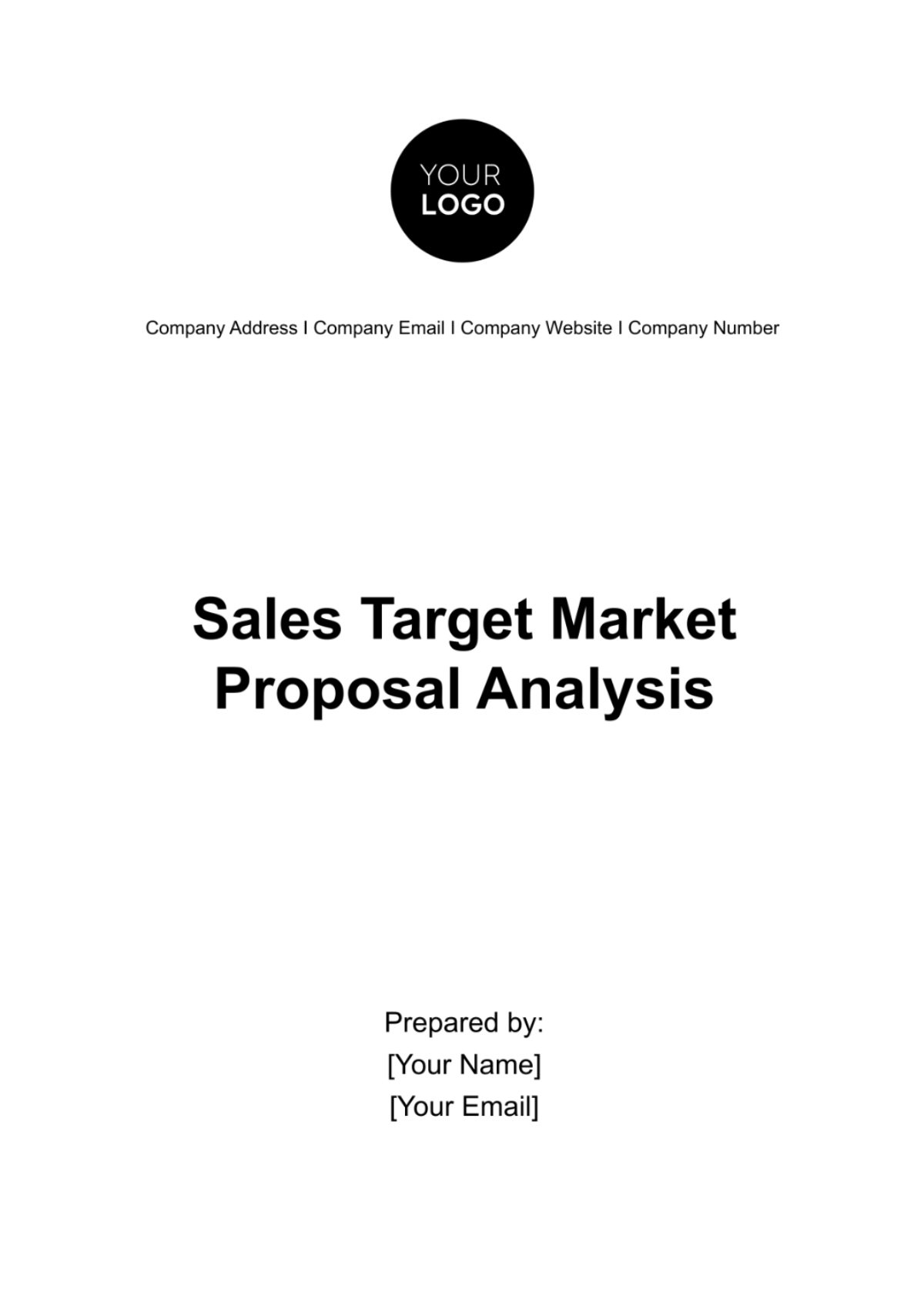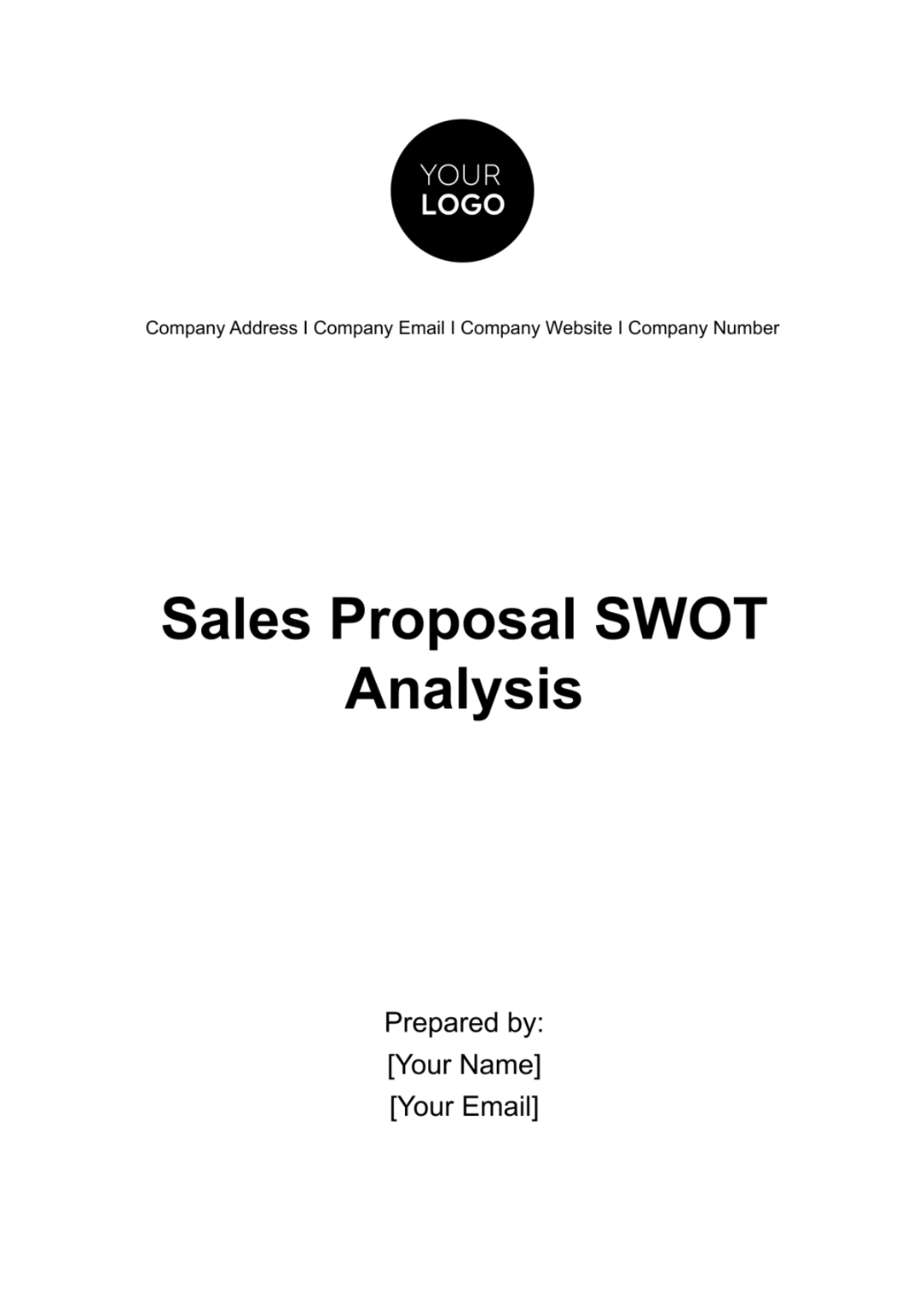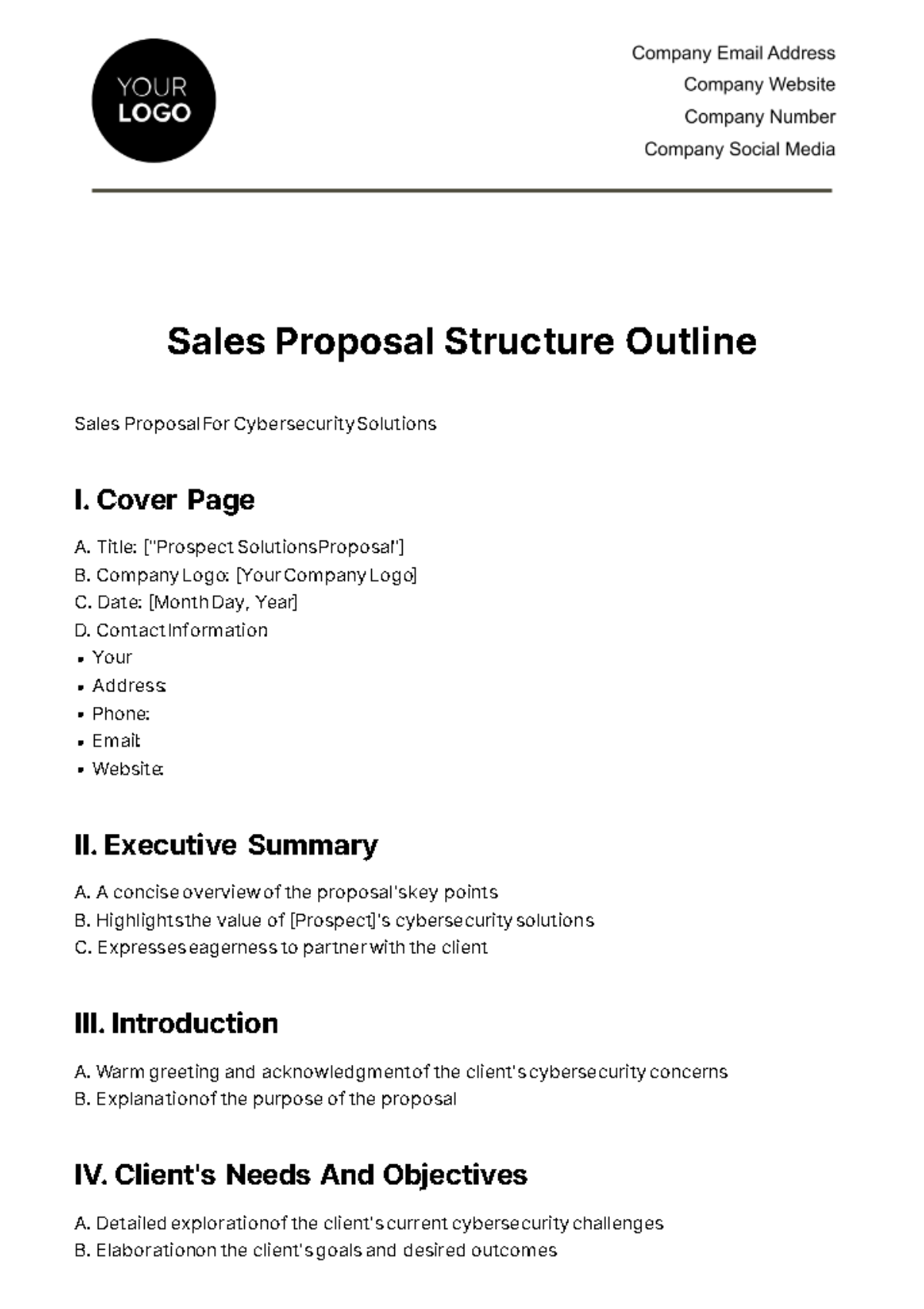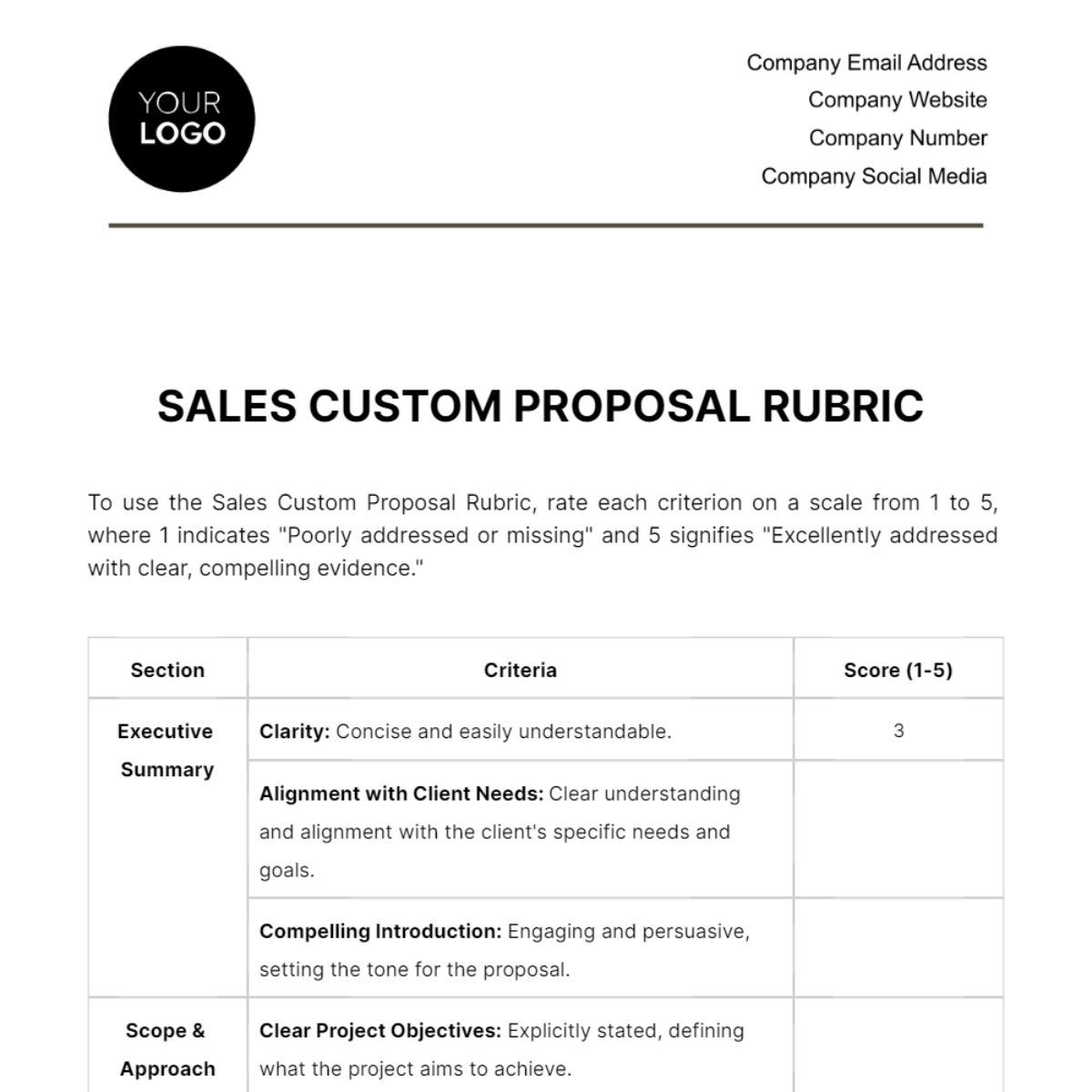Sales Curriculum for Proposal Writing
Introduction
Welcome to [Your Company Name]'s Sales Curriculum for Proposal Writing. In today's competitive food industry landscape, the ability to craft persuasive proposals is paramount to our success. A well-crafted proposal not only demonstrates our commitment to excellence but also serves as the gateway to securing valuable contracts and driving revenue growth.
In this comprehensive program, we are excited to embark on a journey of skill development and knowledge acquisition. Our primary goal is to empower you with the expertise required to create proposals that not only impress but also resonate deeply with our potential clients. Effective proposal writing is not merely a part of our sales process; it is the cornerstone upon which we build lasting client relationships and solidify our position as an industry leader.
Why Proposal Writing Matters
In the food industry, where competition is fierce and choices abound, the written word carries significant weight. Your proposal is often the first point of contact between our company and prospective clients. It is a reflection of our professionalism, attention to detail, and understanding of the client's unique needs and desires. A well-crafted proposal showcases our products and services in the best light, effectively communicates their value, and instills confidence in the minds of our clients.
What to Expect
Throughout this curriculum, you will delve into the intricacies of proposal writing, from understanding our products and services to mastering the art of structuring persuasive narratives. You will learn how to tailor proposals to specific client needs, present pricing strategies that maximize value, and create visually appealing presentations that leave a lasting impression.
But this program goes beyond the mechanics of proposal writing. It also emphasizes the importance of continuous improvement, client-centric thinking, and adaptability in an ever-evolving industry. Our aim is not just to make you proficient proposal writers but to transform you into strategic thinkers who can engage clients on a deeper level.
Your Journey Starts Here
We believe in your potential to excel in the art of proposal writing. Your commitment to this curriculum will not only benefit you but also contribute significantly to the growth and success of [Your Company Name]. As you embark on this journey, keep in mind that every word you write, and every proposal you submit, is an opportunity to make a meaningful impact on our company's future.
So, without further ado, let's dive into [Your Company Name]'s Sales Curriculum for Proposal Writing. Together, we will hone your skills, refine your approach, and ensure that every proposal you create is a testament to our commitment to excellence. Thank you for your dedication, and let's get started on this exciting journey!
Module 1: Understanding Our Products and Services
Objective: | Gain a comprehensive understanding of our products and services to effectively communicate their value in proposals. |
Introduction:
Before you can effectively sell anything, you must first understand what you're selling. In Module 1, we will delve into a detailed exploration of [Your Company Name]'s products and services. This foundational knowledge will serve as the cornerstone upon which we build compelling proposals that resonate with potential clients.
Key Topics:
1.1 Overview of [Your Company Name]'s Product Line:
In-depth exploration of our diverse range of food products.
Understanding the unique features and qualities that set our products apart in the market.
Recognizing the key selling points for each product.
1.2 Features and Benefits of Our Products:
Detailed examination of the specific features and attributes of our products.
Identifying the tangible and intangible benefits that our products offer to clients.
Learning how to align product features with client needs and preferences.
1.3 How Our Services Complement Our Products:
Understanding the suite of services offered by [Your Company Name] to support our products.
Recognizing how our services enhance the overall client experience.
Learning how to effectively communicate the value of these services in proposals.
Module 2: Identifying and Targeting Clients
Objective: | Learn how to identify and target potential clients that align with our offerings. |
Introduction:
In Module 2, we will explore the critical steps involved in identifying and targeting potential clients who are most likely to benefit from [Your Company Name]'s products and services. Understanding your audience is key to crafting proposals that resonate, and this module will equip you with the skills to do just that.
Key Topics:
2.1 Customer Segmentation and Profiling:
Understanding the concept of customer segmentation.
Exploring different methods of segmenting our target market.
Creating detailed customer profiles for various segments.
Recognizing the significance of tailoring proposals to specific customer segments.
2.2 Identifying Ideal Client Profiles:
Defining the characteristics of an ideal client for [Your Company Name].
Identifying key criteria, such as industry, size, location, and budget.
Developing a clear picture of the type of clients we want to target.
Aligning client profiles with our products and services.
2.3 Analyzing Market Trends and Competition:
Staying informed about the latest trends and developments in the food industry.
Conducting competitive analysis to identify our competitors and their strengths and weaknesses.
Utilizing market research data to refine client targeting strategies.
Module 3: Proposal Planning and Research
Objective: | Focus on developing skills in planning and researching as these abilities are fundamental in creating proposals that are tailored and specific to the needs of your audience or clients. |
Introduction:
Module 3 focuses on the crucial steps of proposal planning and research. Before you put pen to paper (or fingers to keyboard), it's essential to define clear objectives, understand the client's unique needs, and gather relevant market data. These foundational elements are the building blocks of compelling proposals that speak directly to your client's pain points and expectations.
Key Topics:
3.1 Defining Proposal Objectives and Goals:
Understanding the importance of setting clear objectives for each proposal.
Establishing measurable goals for what you aim to achieve with the proposal.
Aligning proposal objectives with [Your Company Name]'s overarching sales and marketing strategies.
3.2 Researching the Client's Needs and Pain Points:
Techniques for conducting client research.
Identifying and understanding the specific needs, challenges, and pain points of the client.
Tailoring proposal content to directly address these client concerns.
3.3 Gathering Relevant Market Data and Industry Insights:
The importance of staying informed about industry trends and developments.
Research methods for collecting market data, such as industry reports, competitor analysis, and consumer surveys.
Analyzing and applying market insights to your proposals.
Module 4: Crafting a Compelling Proposal
Objective: | Take the time and effort to skillfully learn and master the art of crafting compelling, persuasive proposals that will deeply resonate and connect with your clients' needs and desires. |
Introduction:
Module 4 is where the rubber meets the road in proposal writing. Here, you'll learn the techniques and strategies to transform your knowledge and research into a persuasive, client-centric proposal. Crafting a compelling proposal involves not just what you say but how you say it, and this module will teach you the art of making your proposals stand out.
Key Topics:
4.1 Structuring a Proposal: Introduction, Body, and Conclusion:
Understanding the importance of a well-organized proposal structure.
Crafting a captivating introduction that grabs the client's attention.
Creating a clear and persuasive body that communicates the proposal's value.
Concluding the proposal effectively, leaving a lasting impression.
4.2 Writing Compelling Executive Summaries:
Defining the purpose and significance of the executive summary.
Techniques for summarizing the proposal's key points concisely.
Writing an executive summary that encourages further reading.
4.3 Highlighting Benefits and Addressing Pain Points:
Identifying the client's pain points and challenges.
Demonstrating how our products and services address these pain points.
Emphasizing the unique benefits and advantages of choosing [Your Company Name].
Module 5: Pricing Strategies
Objective: | It's vital to comprehend the methods of pricing strategies, such as those which have been specifically designed to optimize value yielding benefits for both the client with their needs and the profitability of the company involved. |
Introduction:
Pricing plays a pivotal role in proposal writing. Module 5 will guide you through the intricate world of pricing strategies, ensuring that your proposals strike the right balance between client value and company profitability. By the end of this module, you'll have a firm grasp of pricing models, transparent pricing tables, and the art of demonstrating value.
Key Topics:
5.1 Pricing Models and Strategies:
Exploring various pricing models is a crucial step in formulating a successful pricing strategy. These models include cost-plus pricing, which calculates the price by adding a markup to the cost of goods sold; value-based pricing, which sets prices primarily on the perceived value to the customer rather than on the cost of the product; and competitive pricing, which involves setting prices based on competitors' pricing strategies. Understanding the strengths and weaknesses of each pricing strategy is essential.
For instance, cost-plus pricing ensures coverage of production costs and a profit margin, but it may not always reflect the product's market value. Value-based pricing can maximize profits by aligning price with customer perceived value but requires in-depth knowledge of customer needs and value perceptions. Competitive pricing helps to stay competitive in the market but risks leading to price wars and reduced profit margins. Selecting the most appropriate pricing model requires a careful analysis of the client's needs and market conditions, ensuring that the chosen strategy aligns with business objectives and market realities.
5.2 Creating Transparent and Competitive Pricing Tables:
Designing pricing tables that are clear and easy for clients to understand is crucial. By ensuring transparency in pricing, which includes breaking down costs and fees, clients can easily grasp what they are paying for, fostering trust. Additionally, positioning our pricing competitively while maintaining profitability is key. This involves striking a balance between being attractive to clients and ensuring the business remains financially healthy.
5.3 Demonstrating Value for the Proposed Price:
Articulating the unique value proposition of our products and services is essential to differentiate ourselves in the market. It involves clearly communicating how our offerings stand out and the specific benefits they provide. Additionally, it's important to show how the proposed price aligns with the benefits and solutions offered, ensuring clients see the value they receive for their investment. Addressing potential client concerns about pricing through effective communication is also crucial, as it helps to build trust and clarify any misunderstandings, making sure clients feel their needs and concerns are acknowledged and addressed.
Module 6: Visual Presentation
Objective: | Learn how to use visuals and design elements to enhance the proposal's appeal. |
Introduction:
Module 6 focuses on the visual aspects of proposal writing. Effective use of visuals can significantly enhance the impact of your proposals, making them more engaging and memorable. In this module, you will learn how to incorporate images, graphs, charts, and ensure a professional and cohesive design to reinforce key points effectively.
Key Topics:
6.1 Incorporating Images, Graphs, and Charts:
Understanding the role of visuals in conveying information is key to enhancing comprehension and engagement. Selecting appropriate images, graphs, and charts for different types of data is essential in making complex information more accessible and easier to understand. It's important to ensure that these visuals are relevant and complement the proposal's content, thereby reinforcing the message and making the overall proposal more persuasive and effective.
6.2 Ensuring a Professional and Cohesive Design:
The principles of effective document design, such as layout, typography, and color, play a crucial role in creating impactful proposals. These elements should work together to enhance readability, draw attention to key points, and convey information in a visually appealing manner. Creating a cohesive visual identity that aligns with [Your Company Name]'s branding is essential to reinforce brand recognition and trust. This involves using consistent brand colors, fonts, and graphic elements throughout the proposal. Additionally, maintaining a professional and consistent look and feel across the document ensures that the proposal not only reflects the company's professionalism but also stands out in the competitive landscape.
6.3 Using Visuals to Reinforce Key Points:
Identifying key messages and content that can be enhanced with visuals.
Integrating visuals strategically to emphasize important information.
Ensuring that visuals are easy to interpret and enhance the proposal's persuasiveness.
Module 7: Proofreading and Quality Assurance
Objective: | Ensure that proposals are error-free and meet quality standards. |
Introduction:
Module 7 is dedicated to the crucial task of proofreading and quality assurance. A polished and error-free proposal not only reflects professionalism but also instills confidence in clients. In this module, you'll learn the techniques for effective editing and proofreading, develop quality assurance checklists, and understand the importance of clarity and consistency in proposals.
Key Topics:
7.1 Editing and Proofreading Techniques:
Understanding the difference between editing and proofreading is crucial in the writing process. Editing involves making changes and improvements to the content, focusing on the flow, clarity, structure, and overall quality of the text. It's about refining the message and ensuring it effectively communicates its intended purpose. On the other hand, proofreading is the final step before publication, concentrating on identifying and correcting grammar, spelling, punctuation, and typographical errors to ensure the document is error-free.
Techniques for identifying and correcting these errors include reading the text aloud to catch awkward phrasing, using spell check tools cautiously while being aware of their limitations, and reviewing the document in multiple passes, focusing on one type of error at a time.
Strategies for improving sentence structure and overall readability include varying sentence length and structure to maintain the reader's interest, using active voice to make sentences more dynamic, and ensuring paragraphs flow logically from one to the next. Simplifying complex ideas and avoiding jargon unless necessary can also significantly enhance readability, making the content accessible to a wider audience.
7.2 Quality Assurance Checklists:
Developing a comprehensive checklist for evaluating proposal content is crucial for ensuring thoroughness and quality. This checklist should cover all necessary components, ensuring the proposal is complete and meets all requirements. Additionally, creating a systematic process for error detection and correction is essential. This process should include steps for identifying and fixing mistakes, ranging from factual inaccuracies to grammatical errors, ensuring the proposal is both accurate and polished. This methodical approach streamlines the review process, enhances the proposal's overall effectiveness, and increases the likelihood of its success.
7.3 Reviewing Proposals for Clarity and Consistency:
Evaluating proposals involves assessing clarity and coherence in the narrative, ensuring formatting, tone, and language consistency, and rectifying any inconsistencies in data and messaging to maintain a unified and effective presentation.
Module 8: Submission and Follow-Up
Objective: | Understand the proposal submission process and how to follow up effectively. |
Introduction:
Module 8 delves into the critical steps of proposal submission and the post-submission follow-up process. Winning contracts often hinge on the effectiveness of these steps. In this module, you'll learn how to prepare proposals for submission, track their progress, and employ strategies for follow-up that can maximize your chances of success.
Key Topics:
8.1 Preparing Proposals for Submission:
Understanding the requirements and guidelines of the submission process.
Assembling and organizing proposal components, including attachments and supporting documents.
Reviewing the proposal for completeness and compliance with submission instructions.
8.2 Tracking Proposal Progress:
Establishing a system for tracking proposals from submission to decision.
Recording submission dates, key contact information, and follow-up actions.
Identifying potential bottlenecks or delays and taking proactive measures.
8.3 Post-Submission Follow-Up Strategies:
Developing a follow-up timeline and strategy is crucial for maintaining engagement with clients and stakeholders after a proposal submission. It involves setting clear milestones for communication, ensuring that there is a structured approach to staying in touch with all parties involved. This includes addressing client inquiries and requests for additional information promptly, which is essential for demonstrating attentiveness and commitment to their needs. Effective communication after submitting a proposal not only keeps the dialogue open but also strengthens the relationship with clients and stakeholders, increasing the chances of the proposal's success.
Conclusion
Congratulations! You have completed [Your Company Name]'s Sales Curriculum for Proposal Writing, and we commend your dedication to mastering the art of persuasive proposal writing. As you conclude this program, you leave with a wealth of knowledge and skills that will undoubtedly propel you to success in your role and contribute significantly to our company's growth and success.
Your newfound expertise in proposal writing isn't just about words on paper; it's about effectively communicating the value of [Your Company Name]'s products and services to our clients. A well-crafted proposal can open doors, win contracts, and foster long-lasting client relationships. Your contributions in this regard will play a pivotal role in our company's continued growth and success.
Best of luck in your journey ahead, and may your persuasive proposals continue to bring success and prosperity to [Your Company Name]. Let's take the next steps together!
